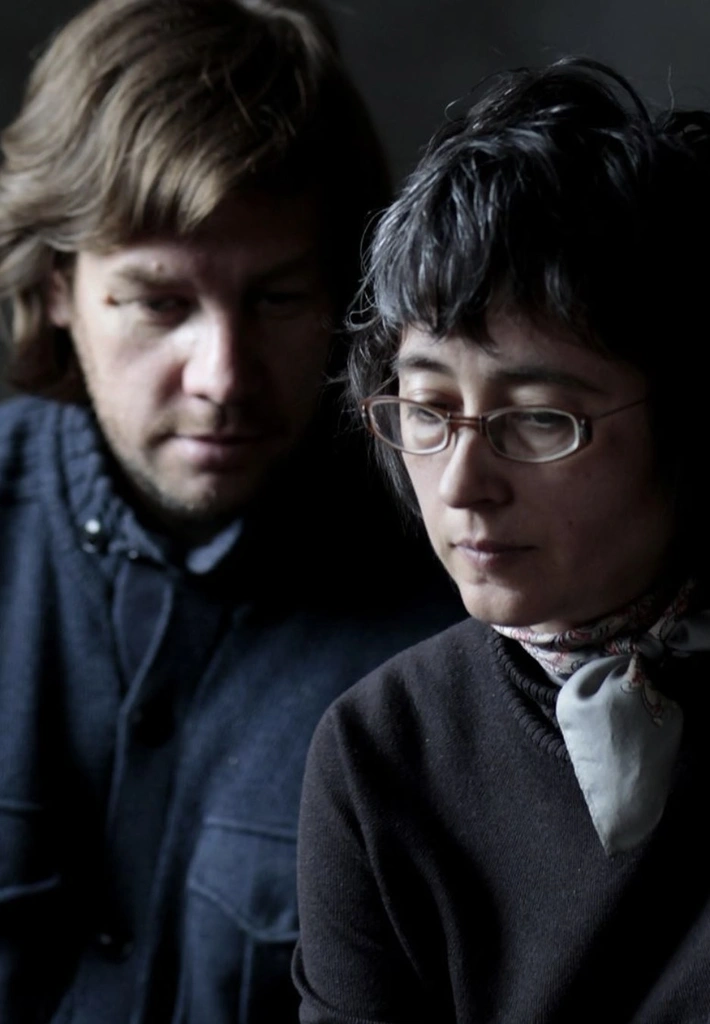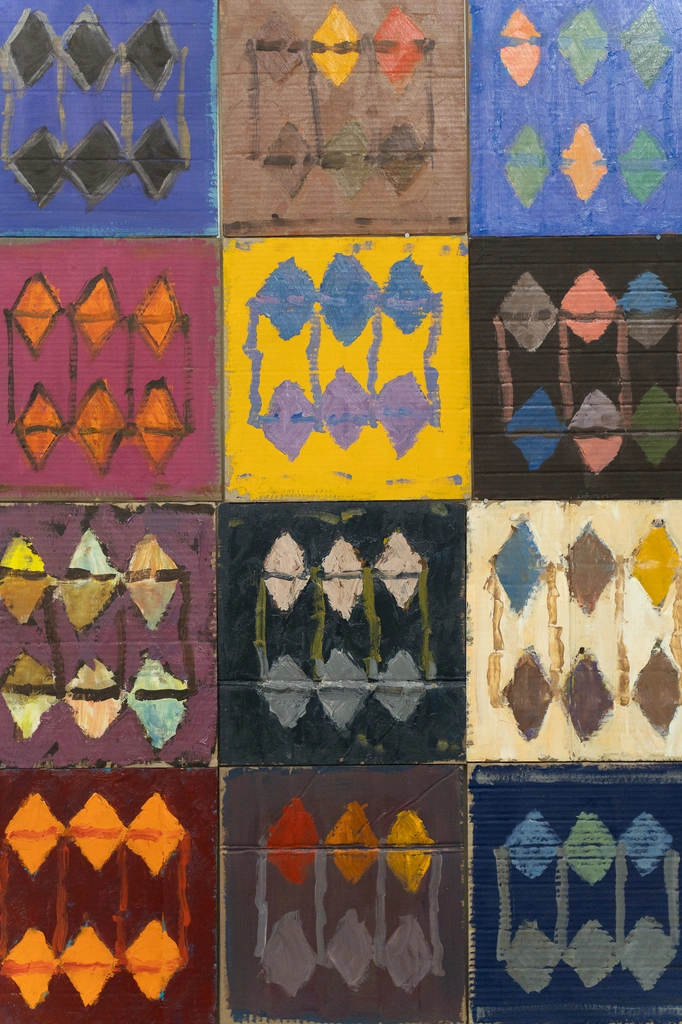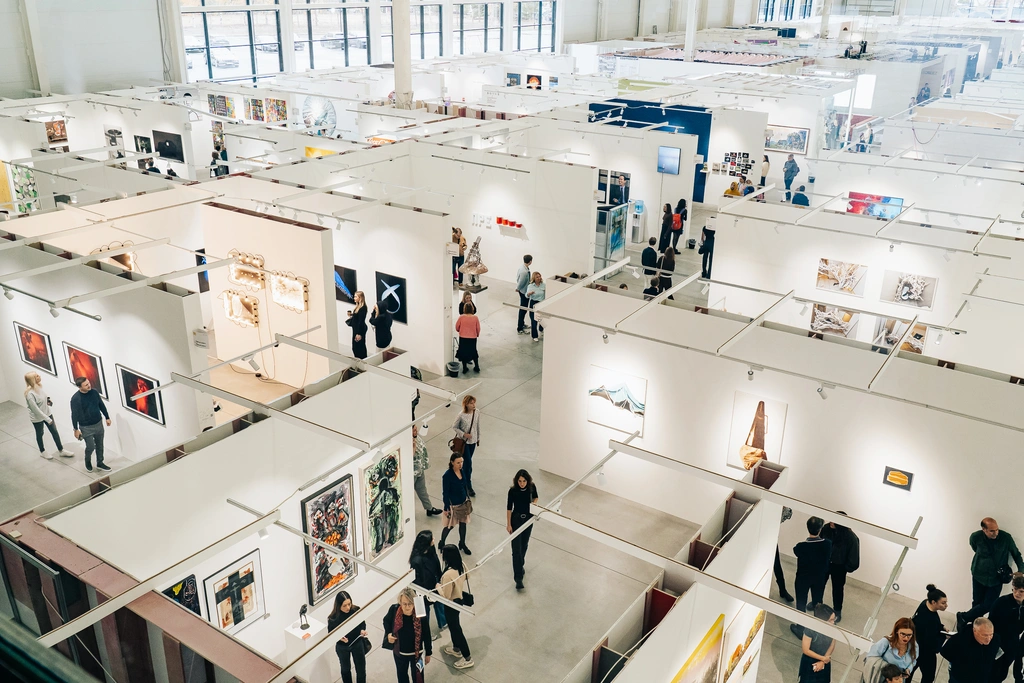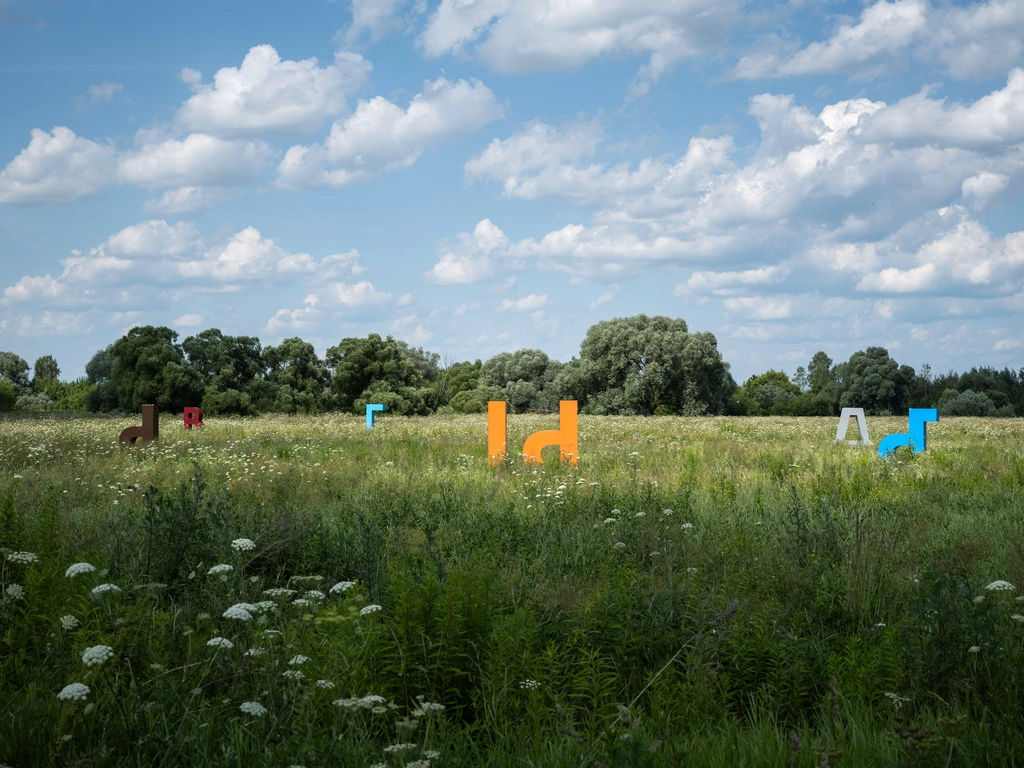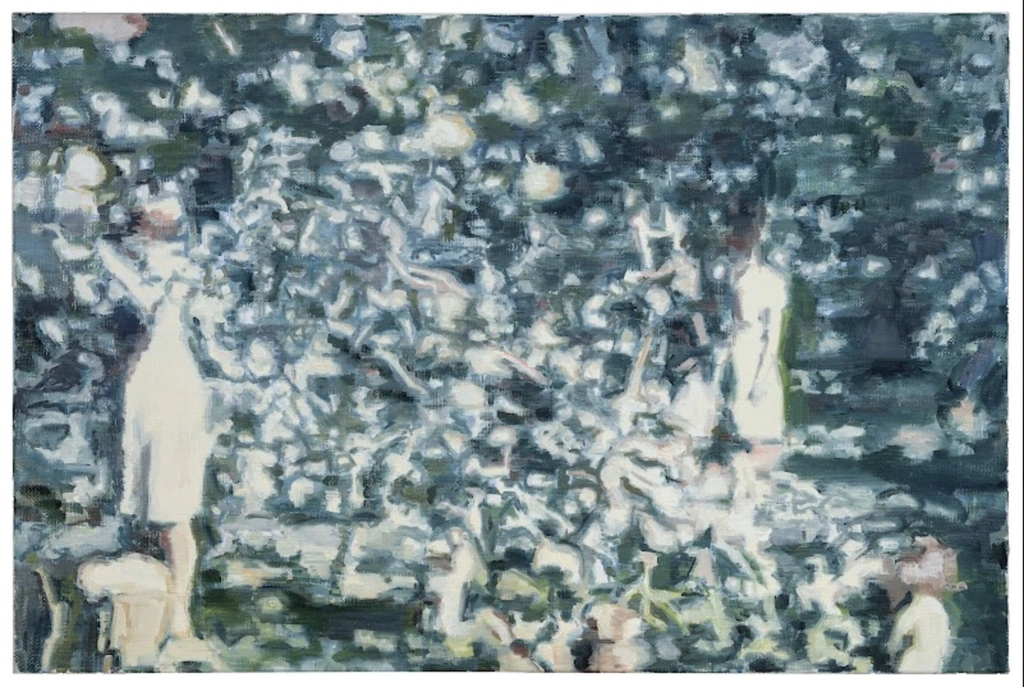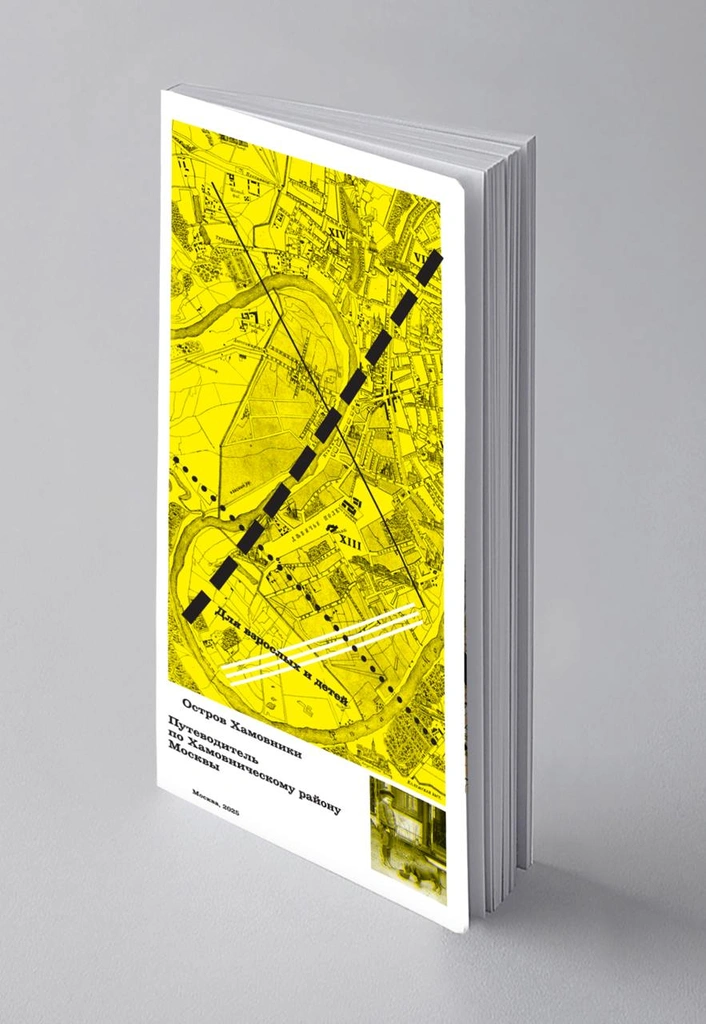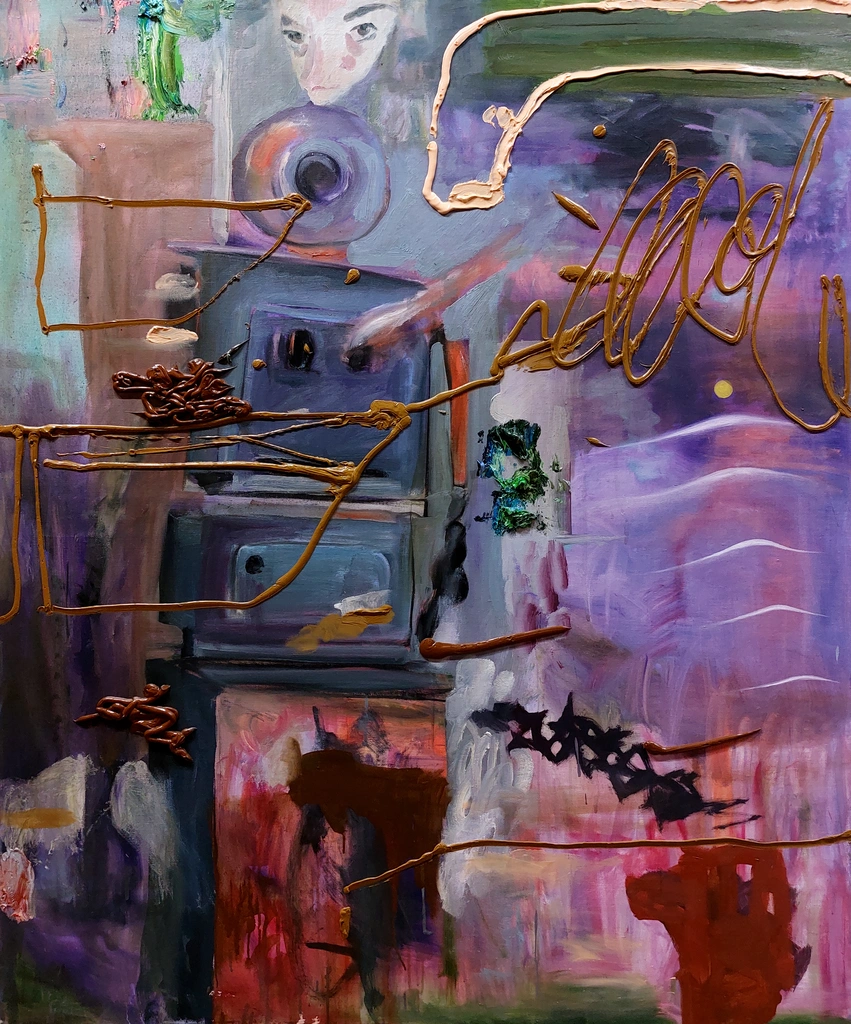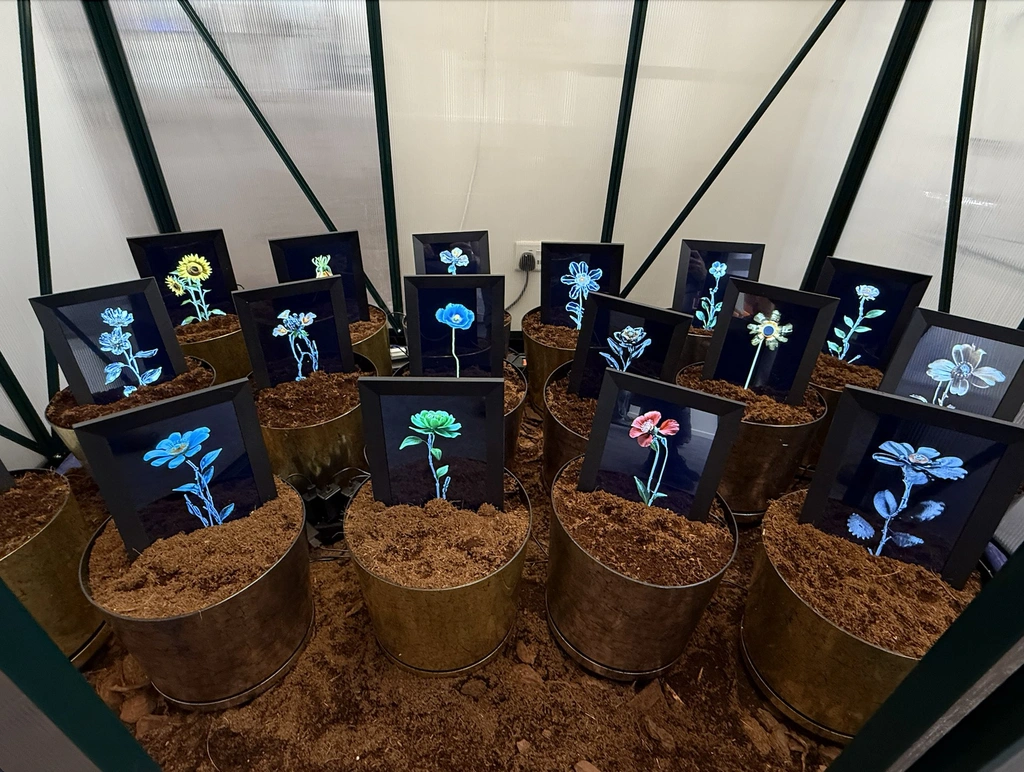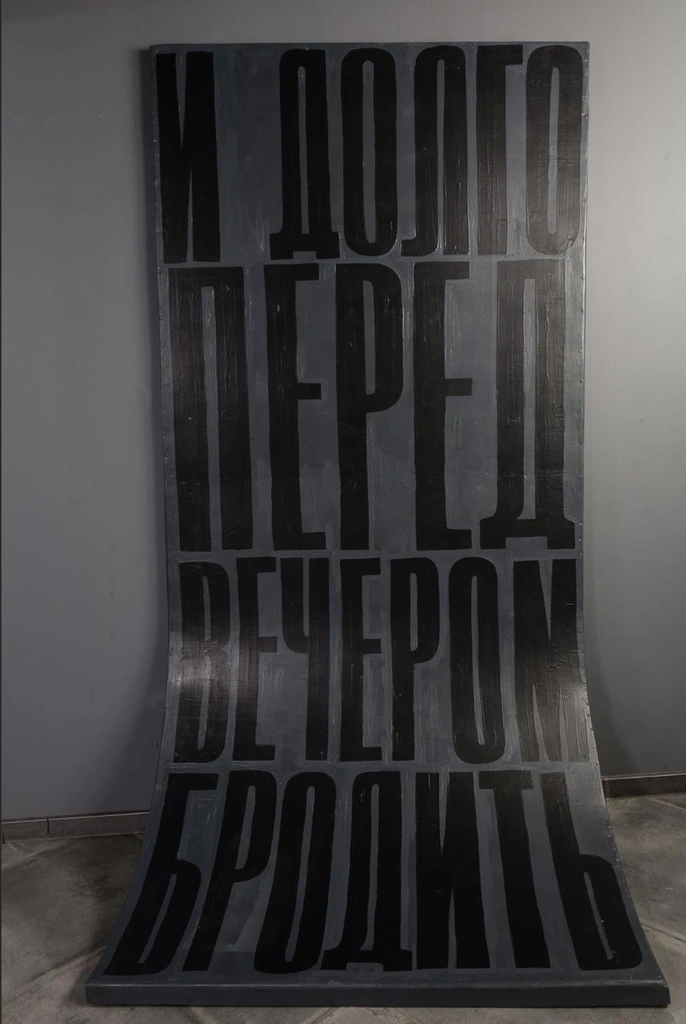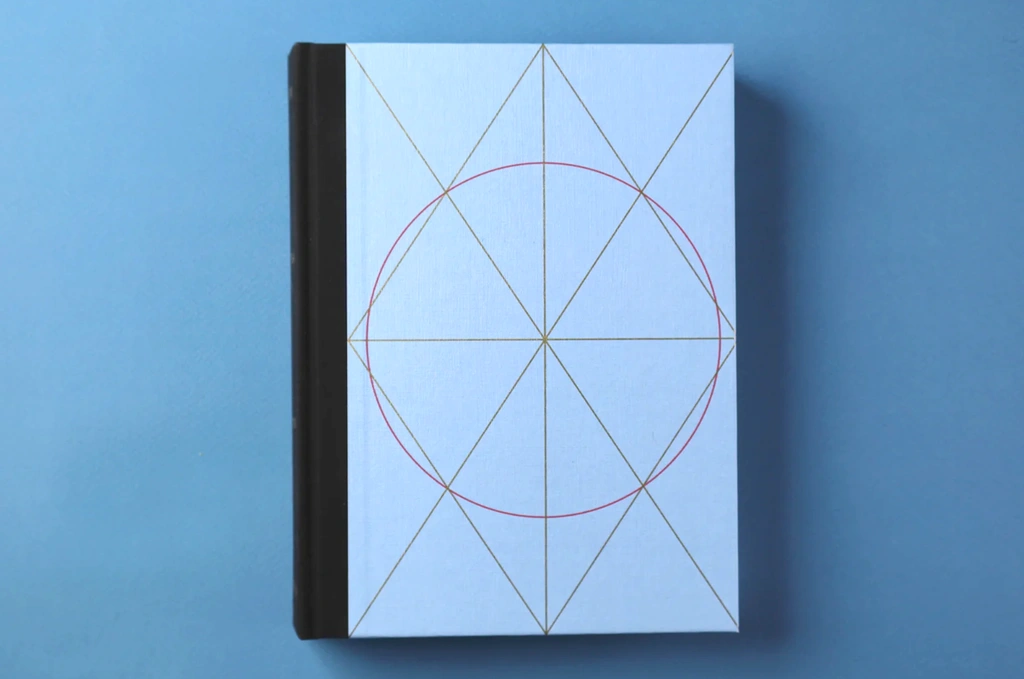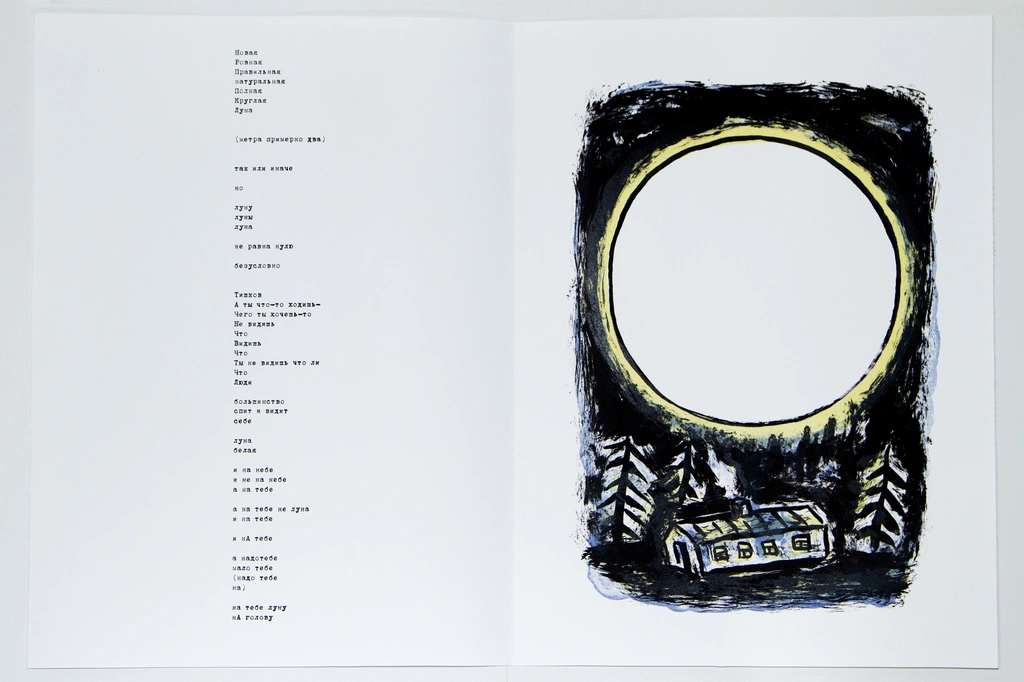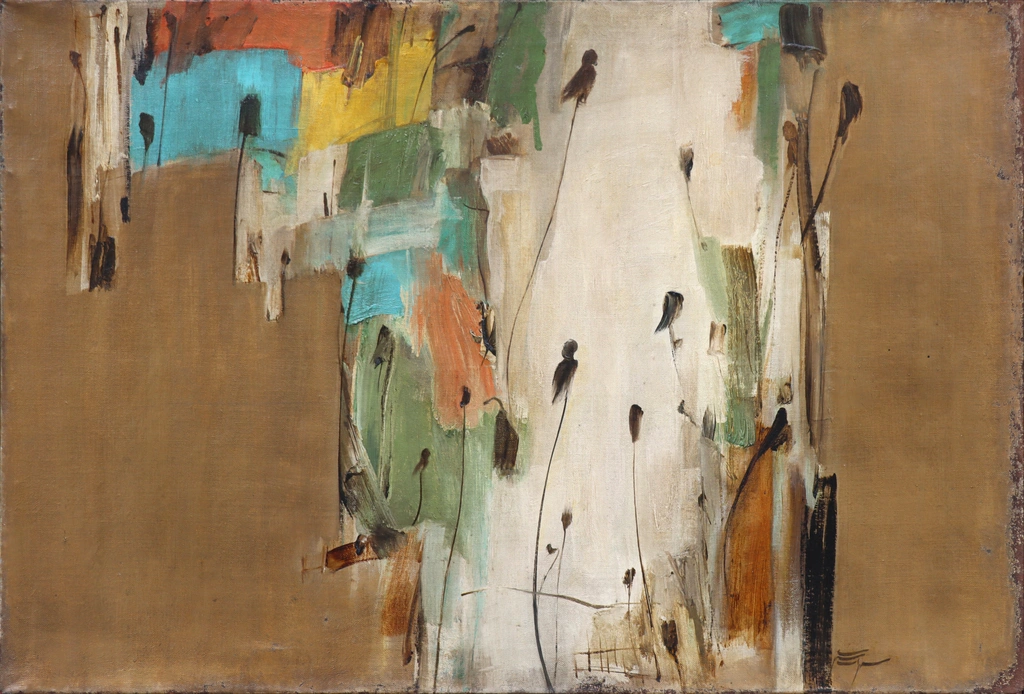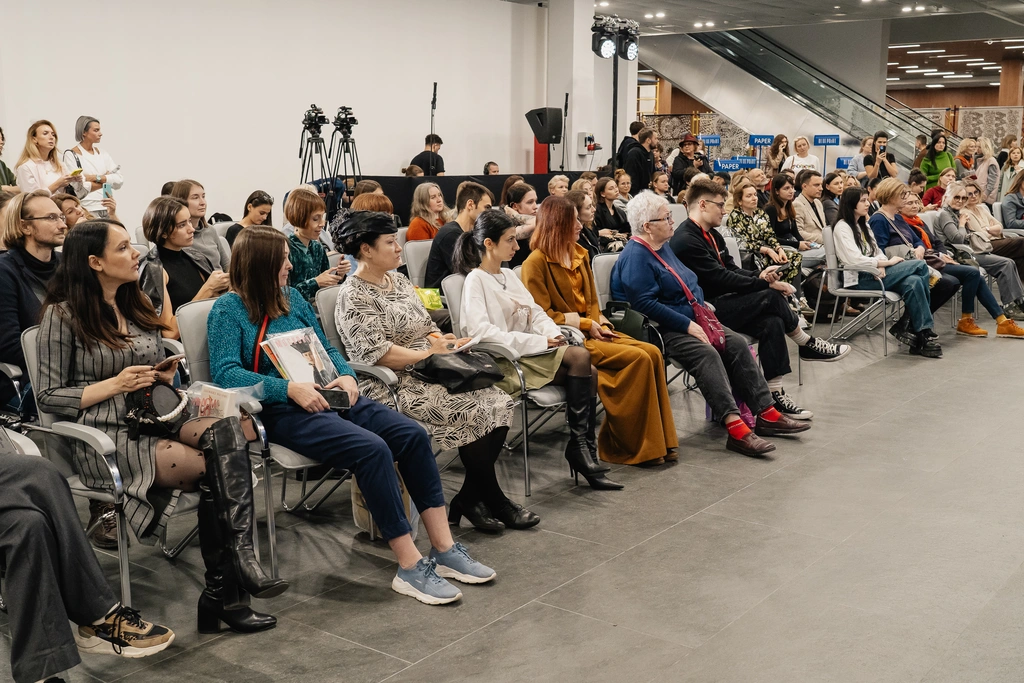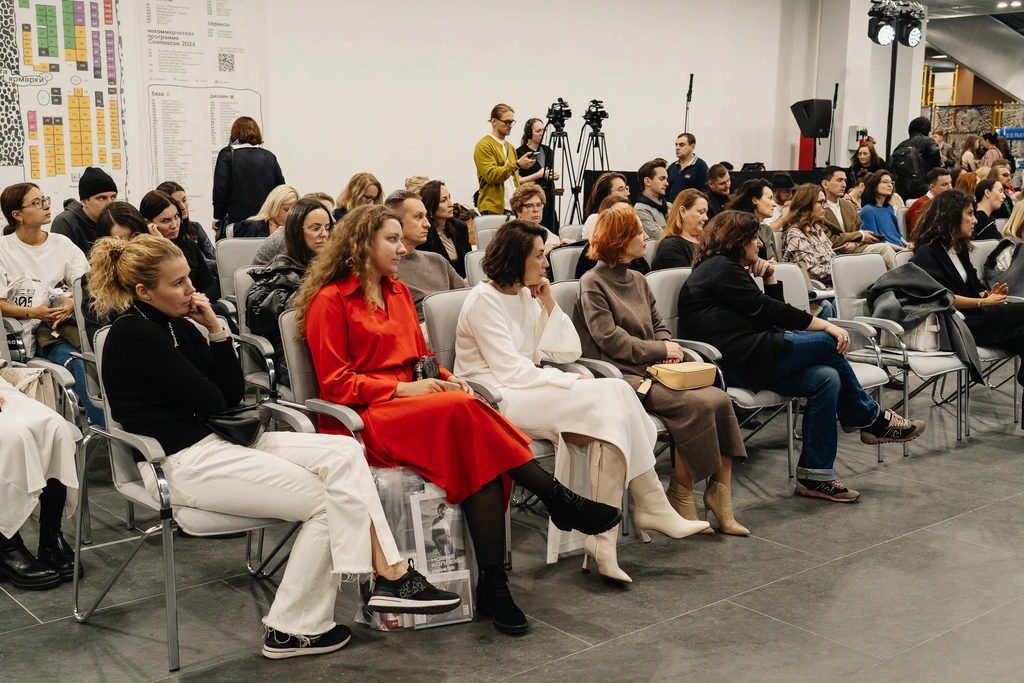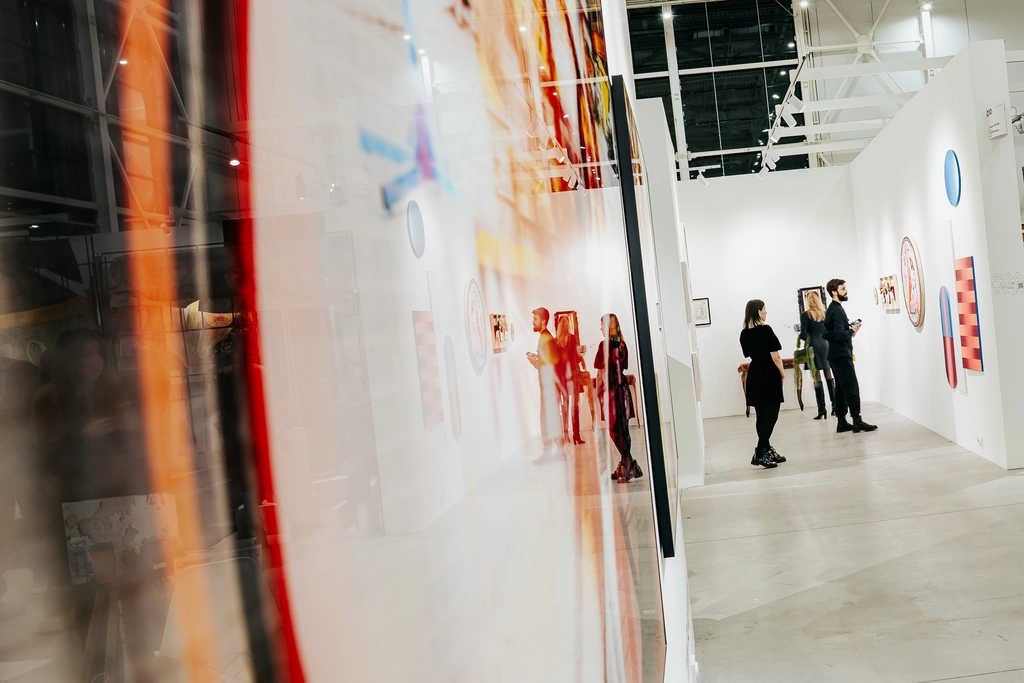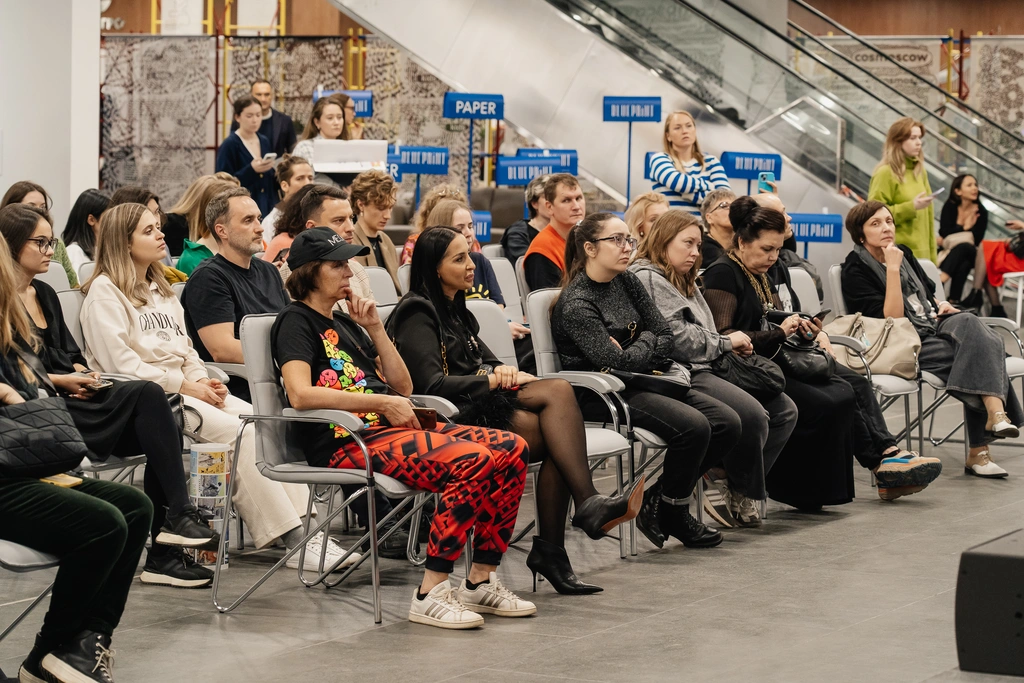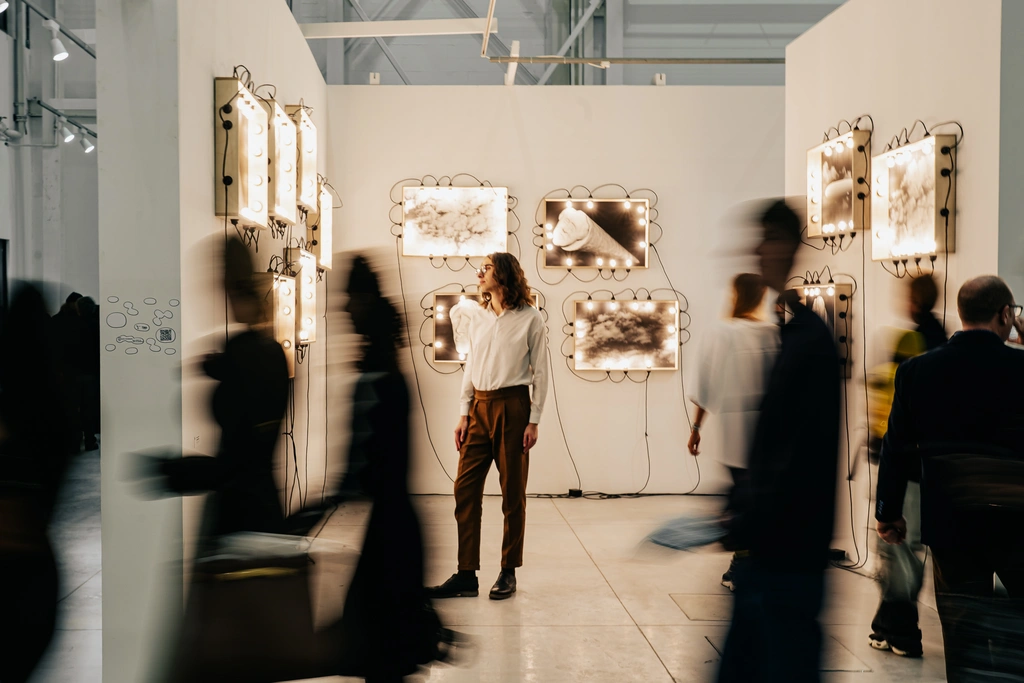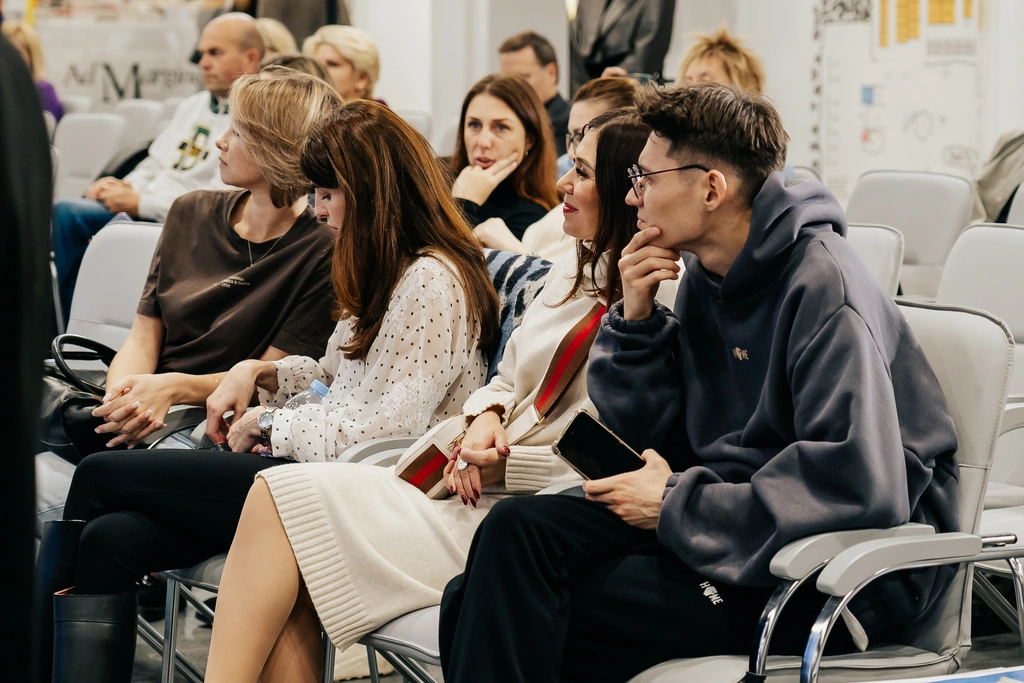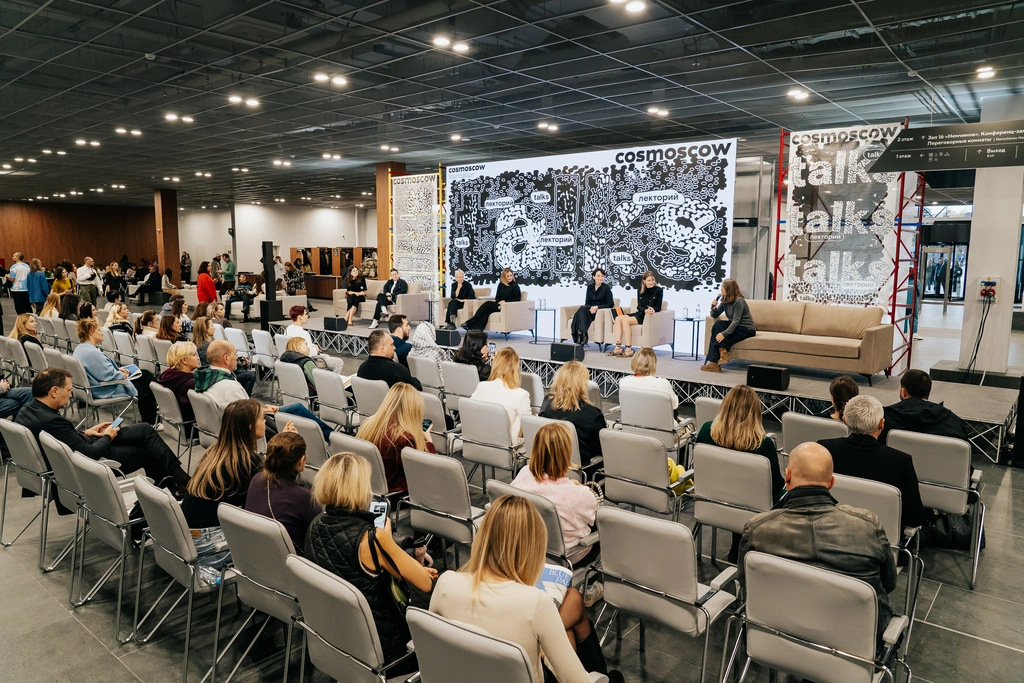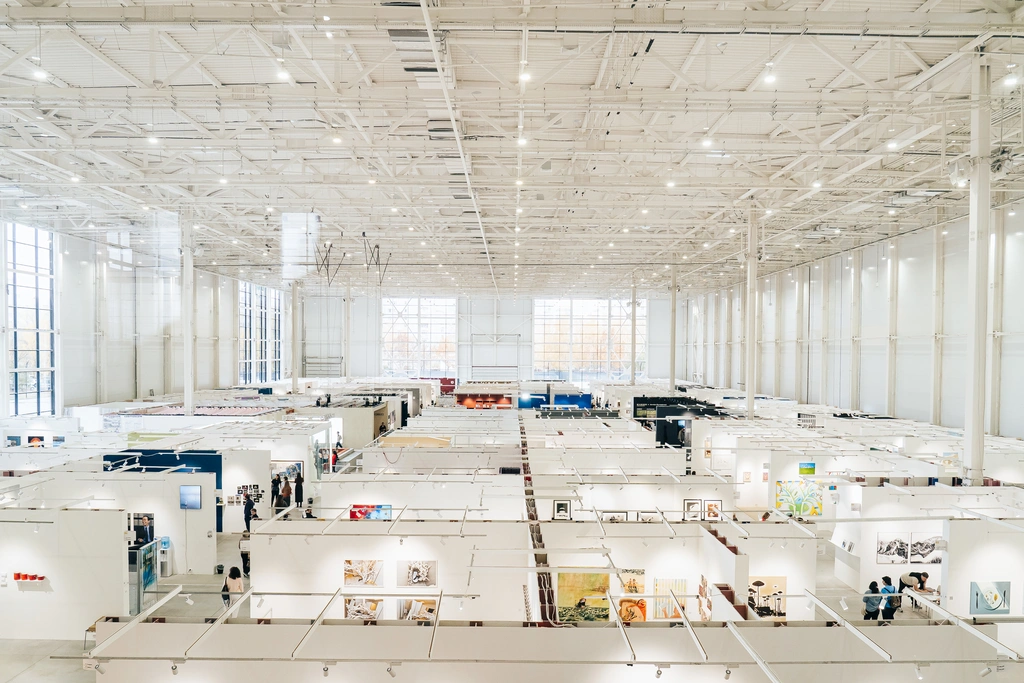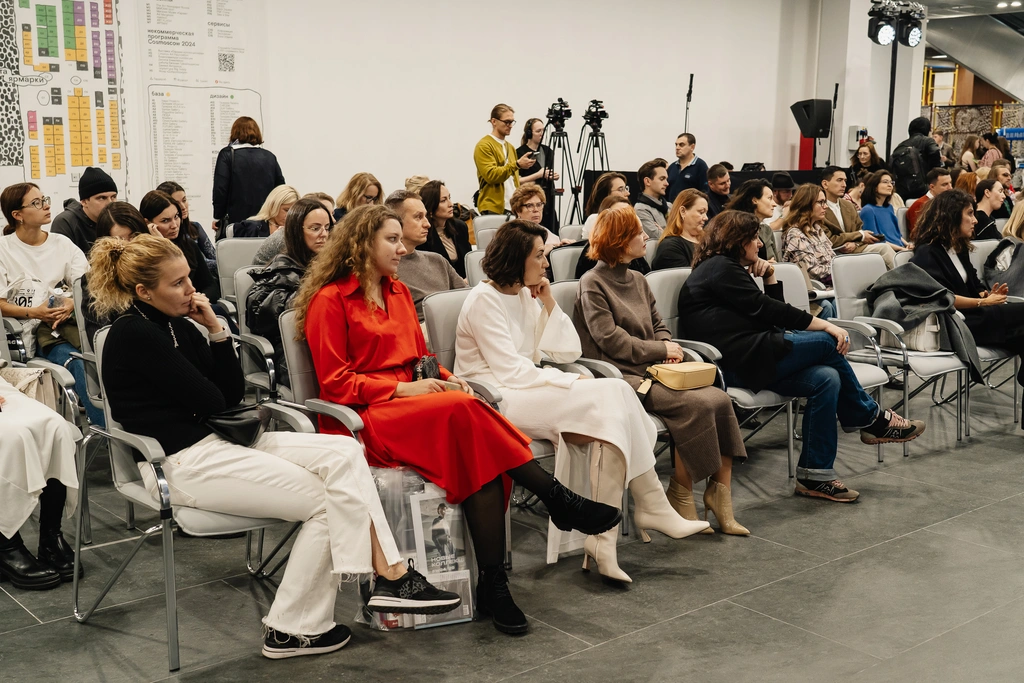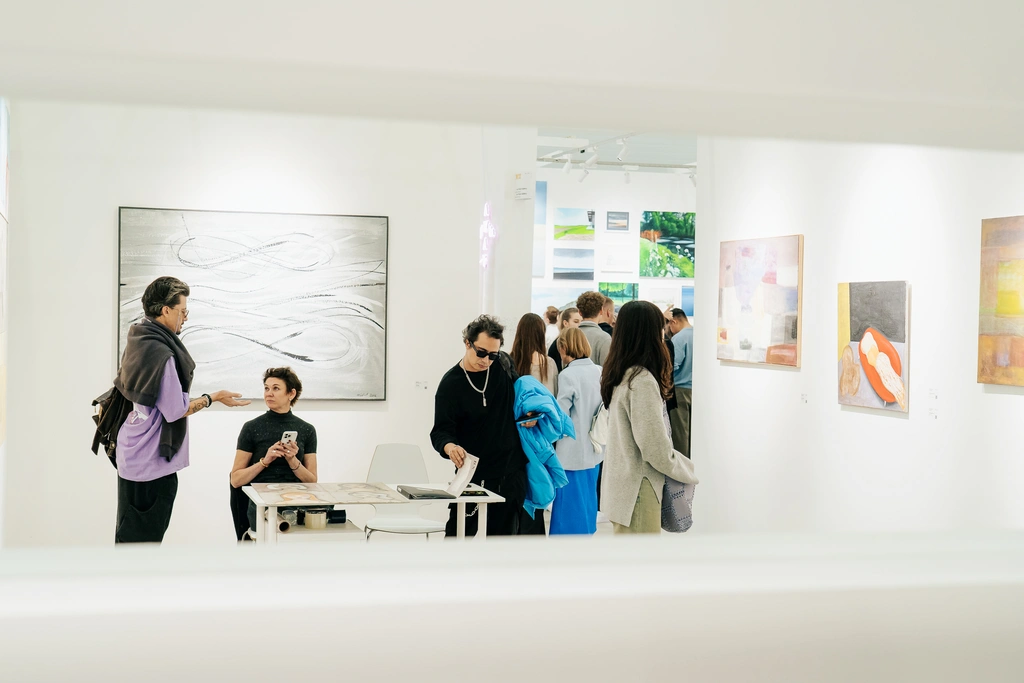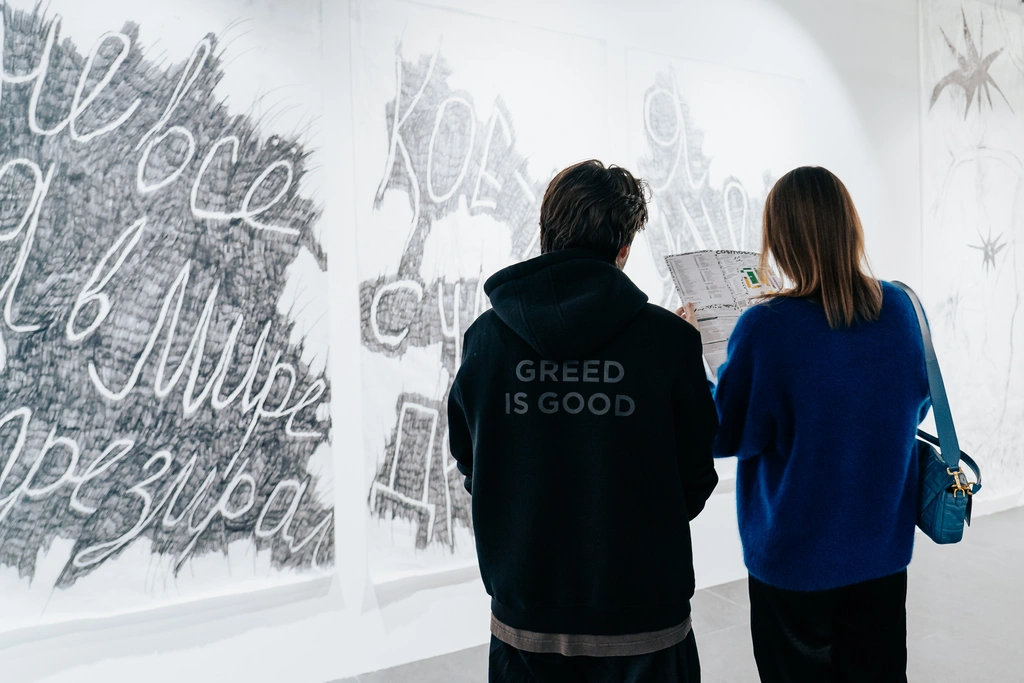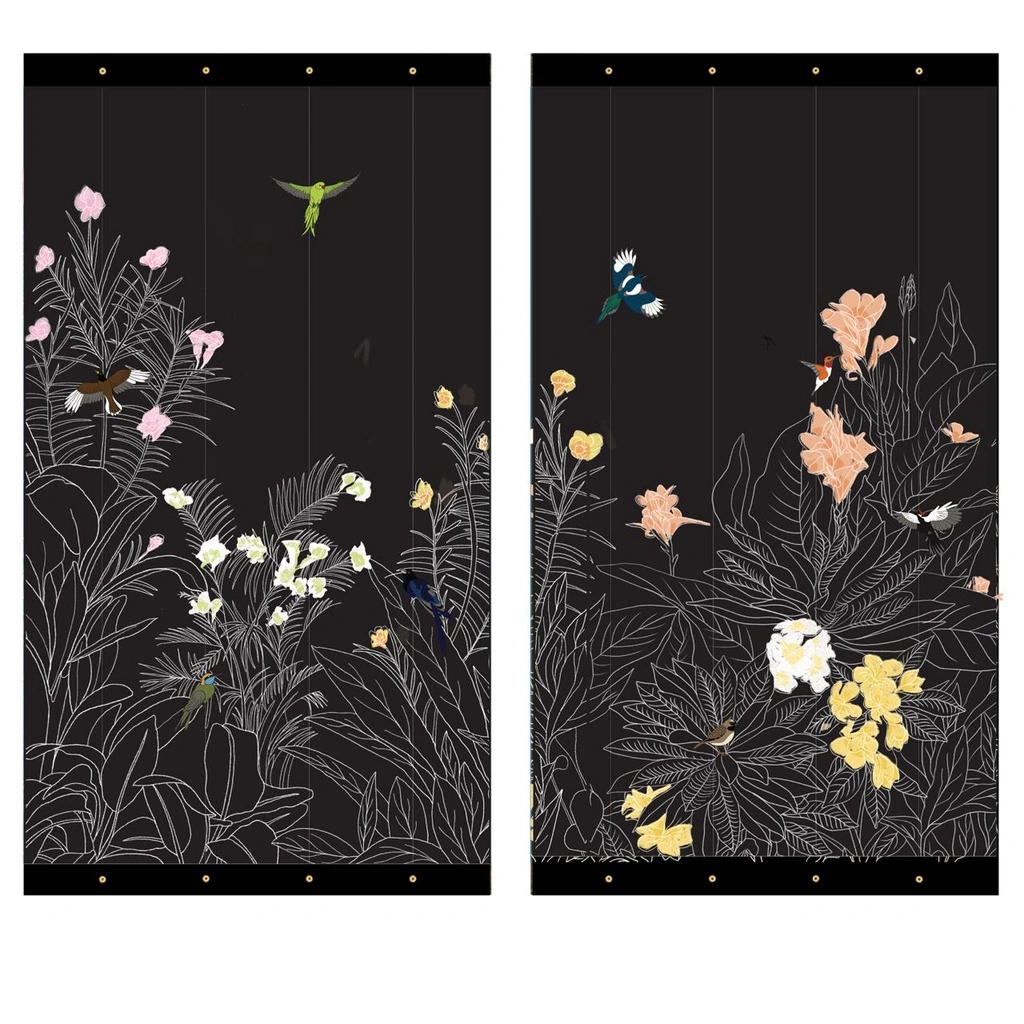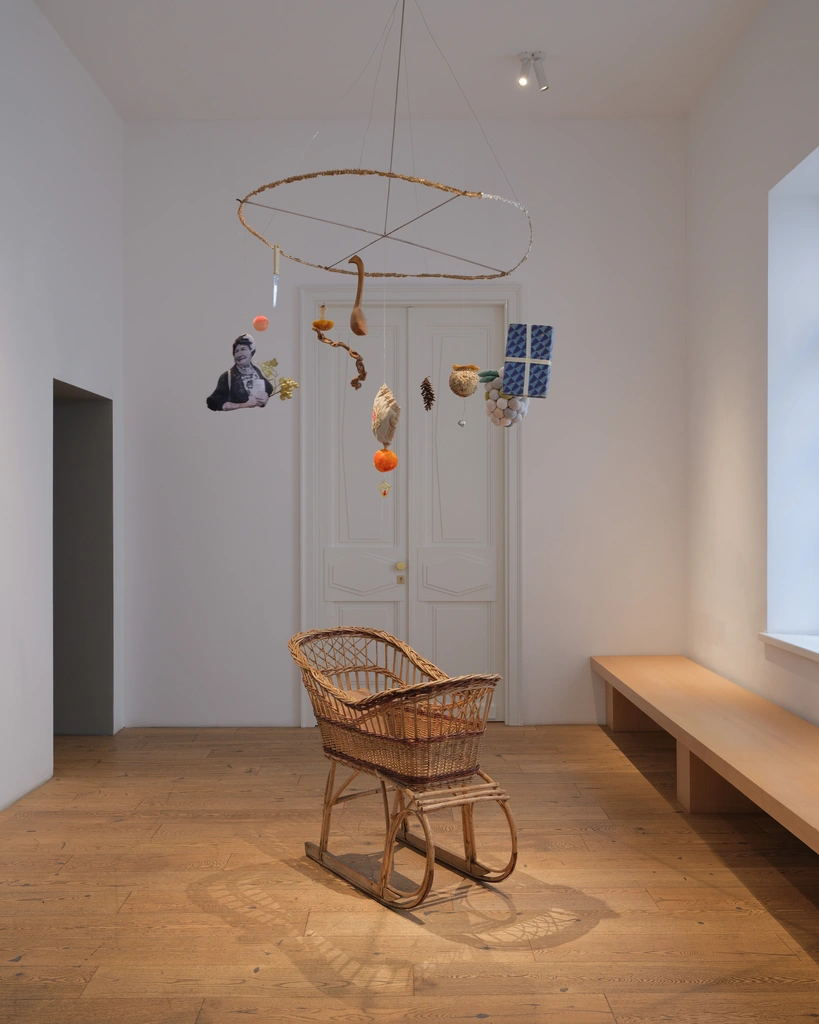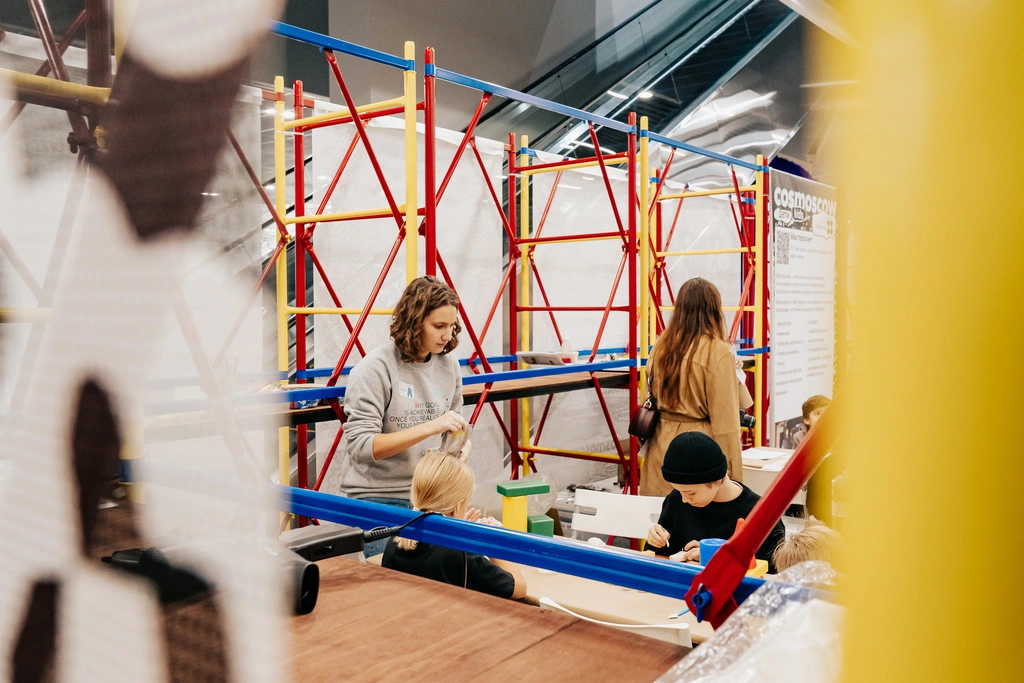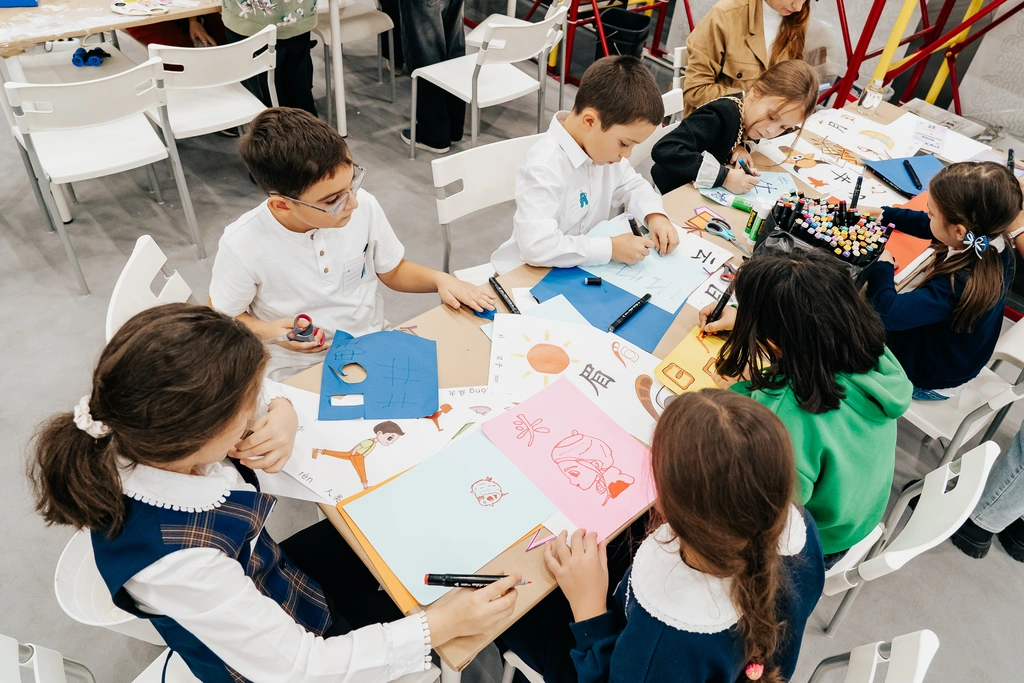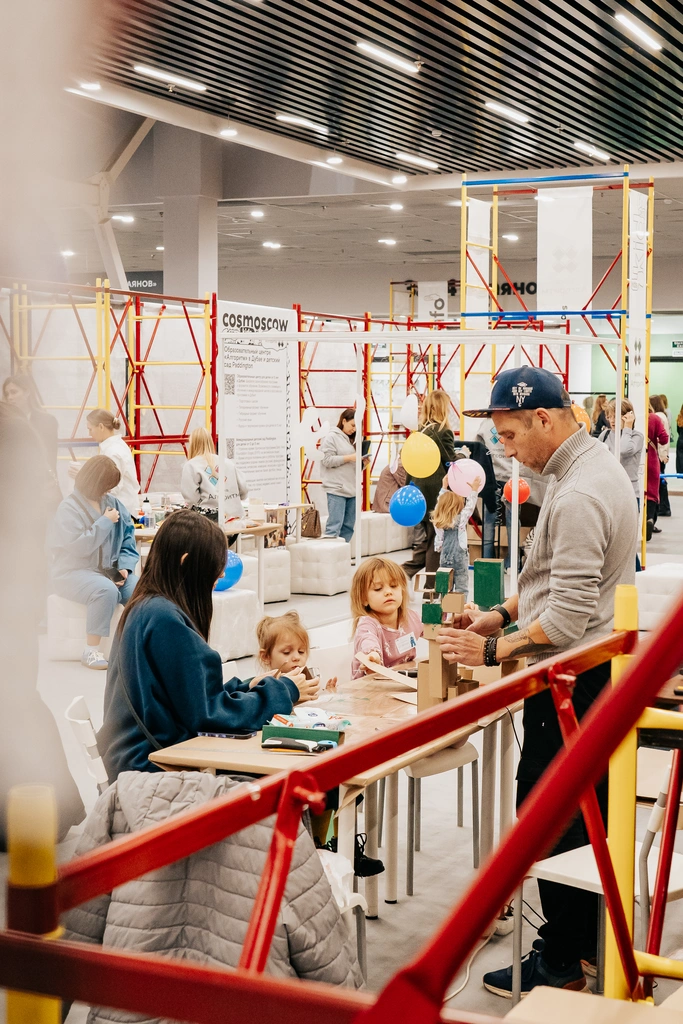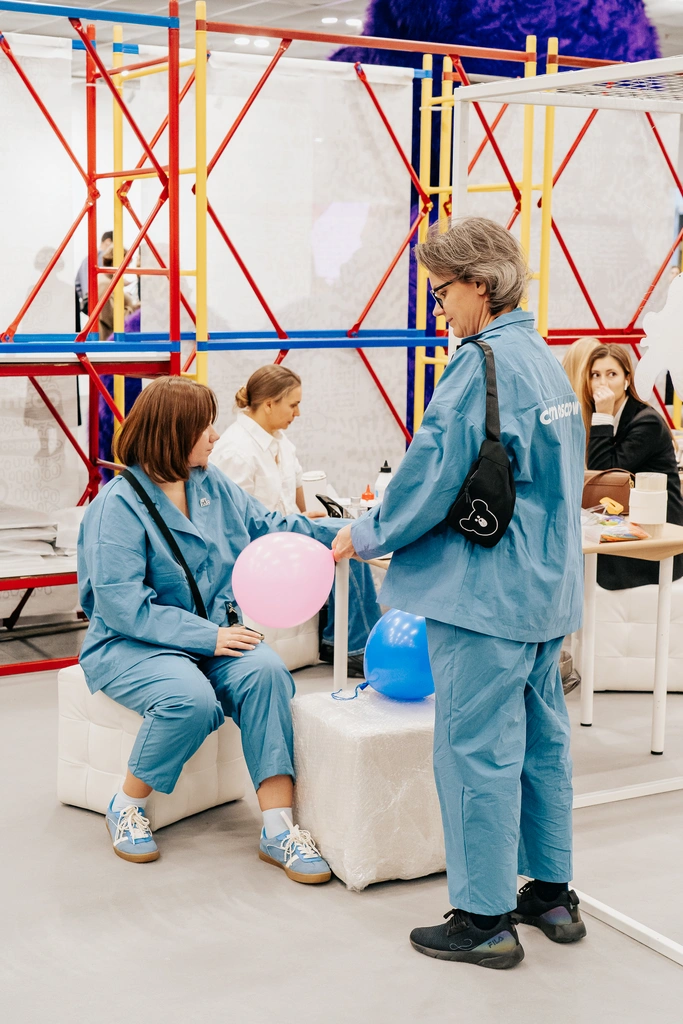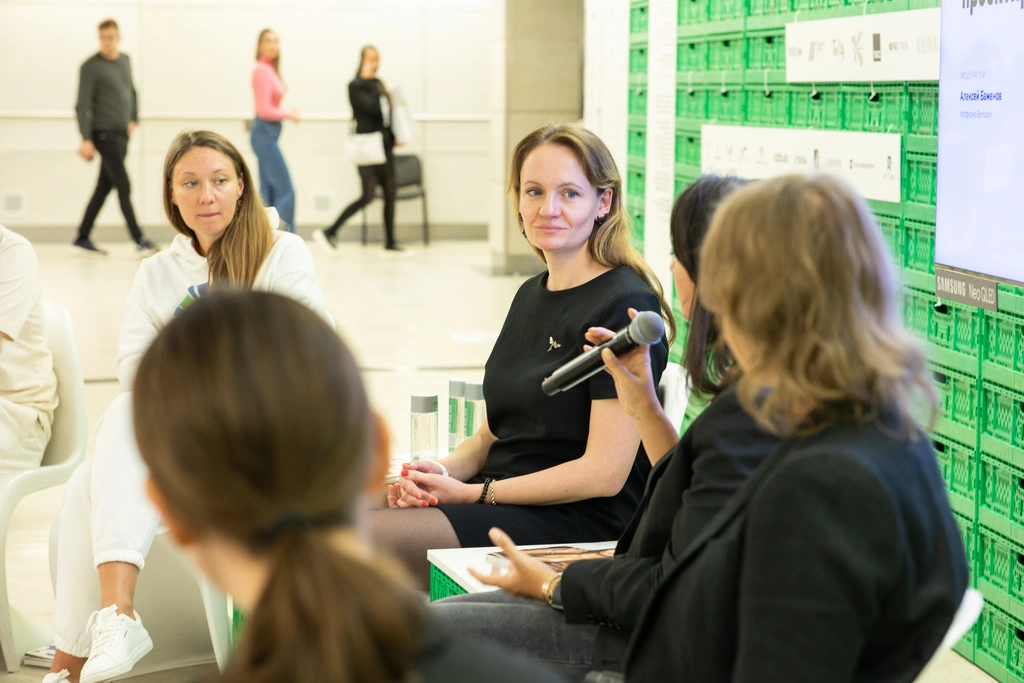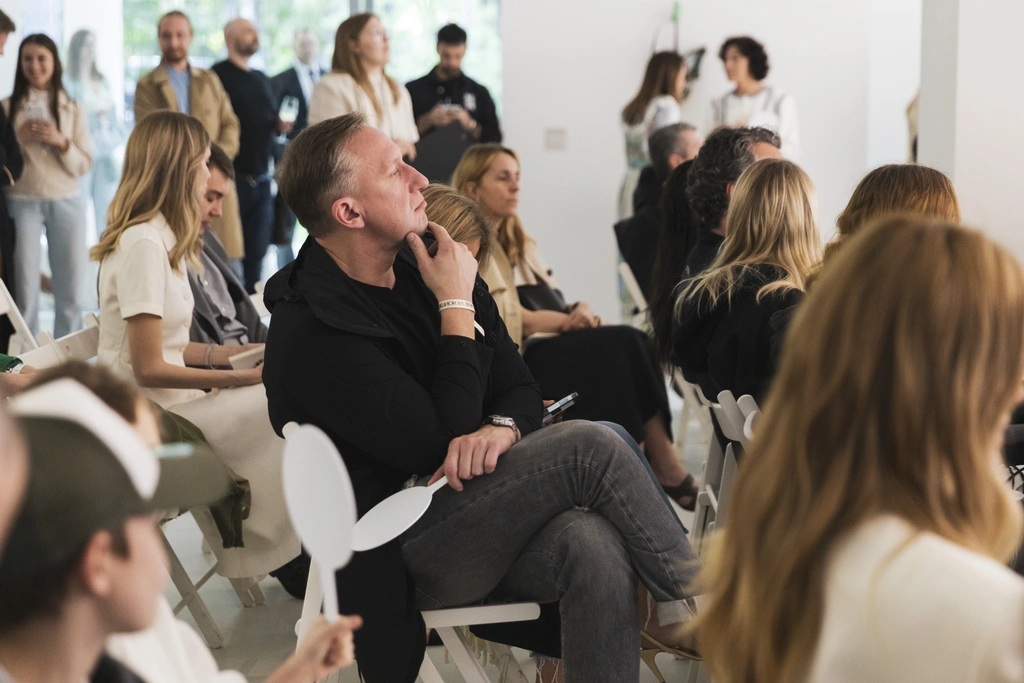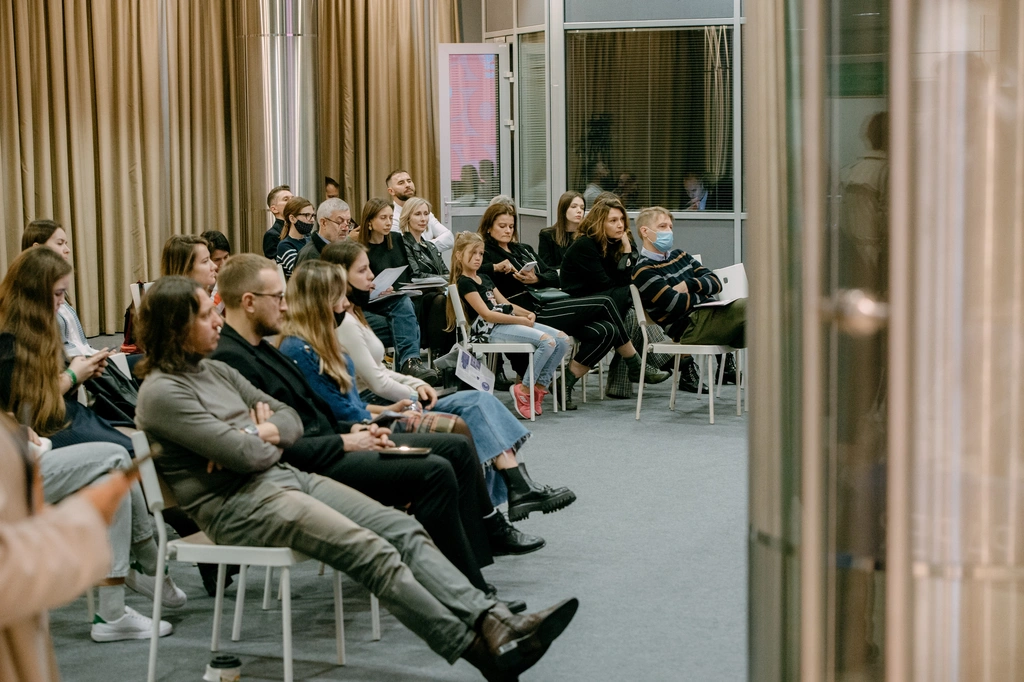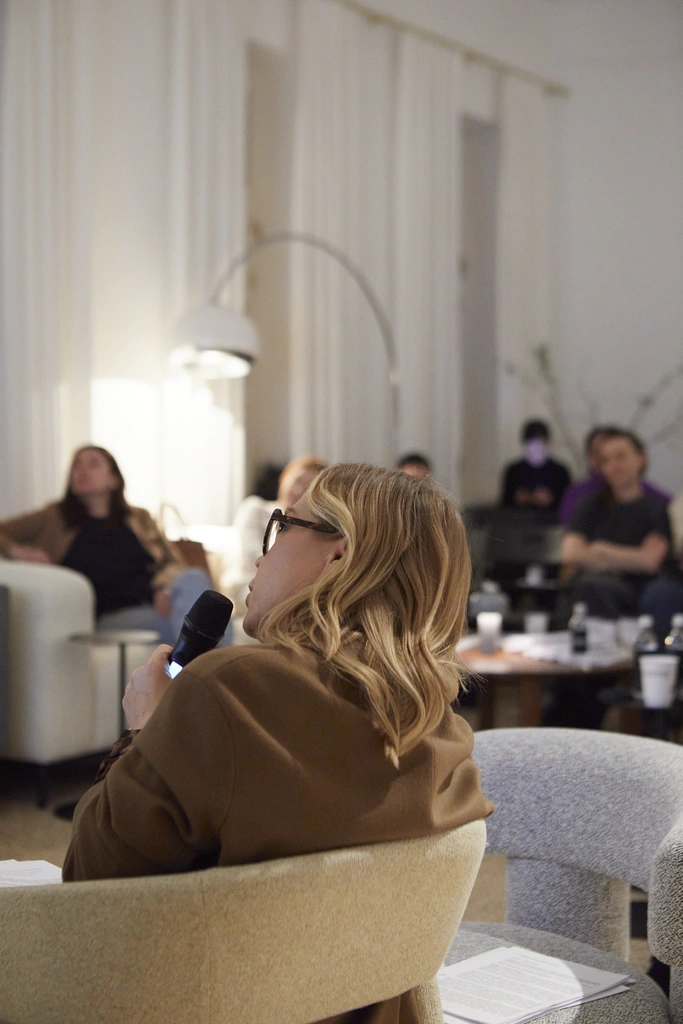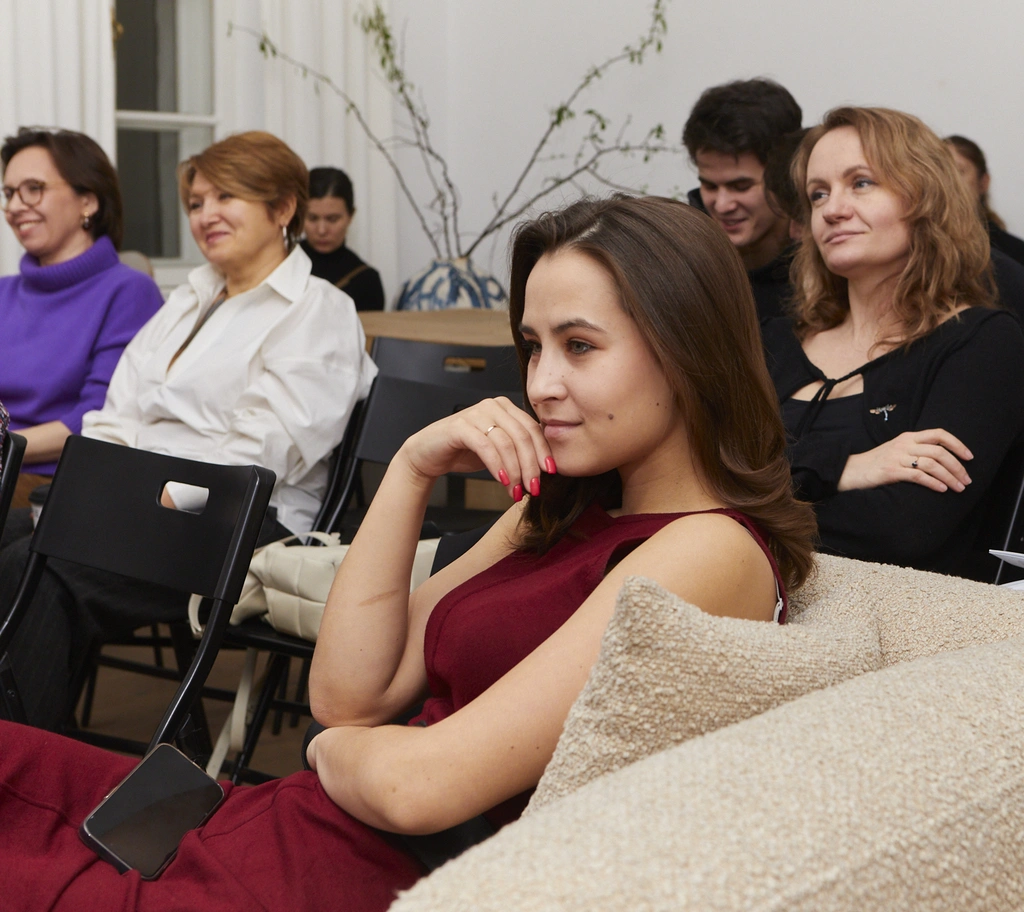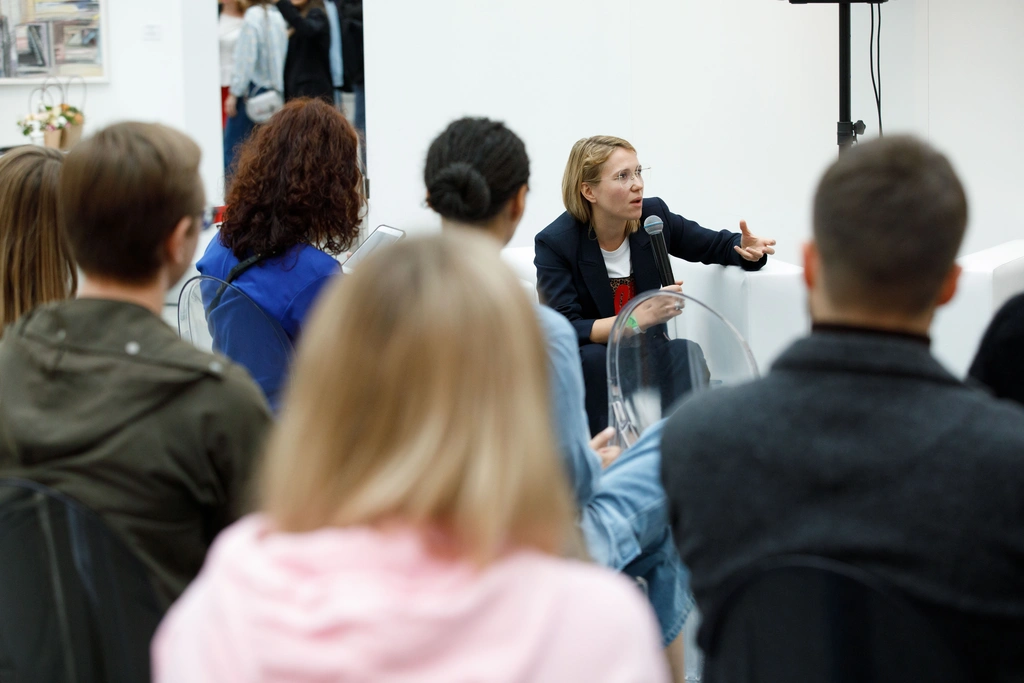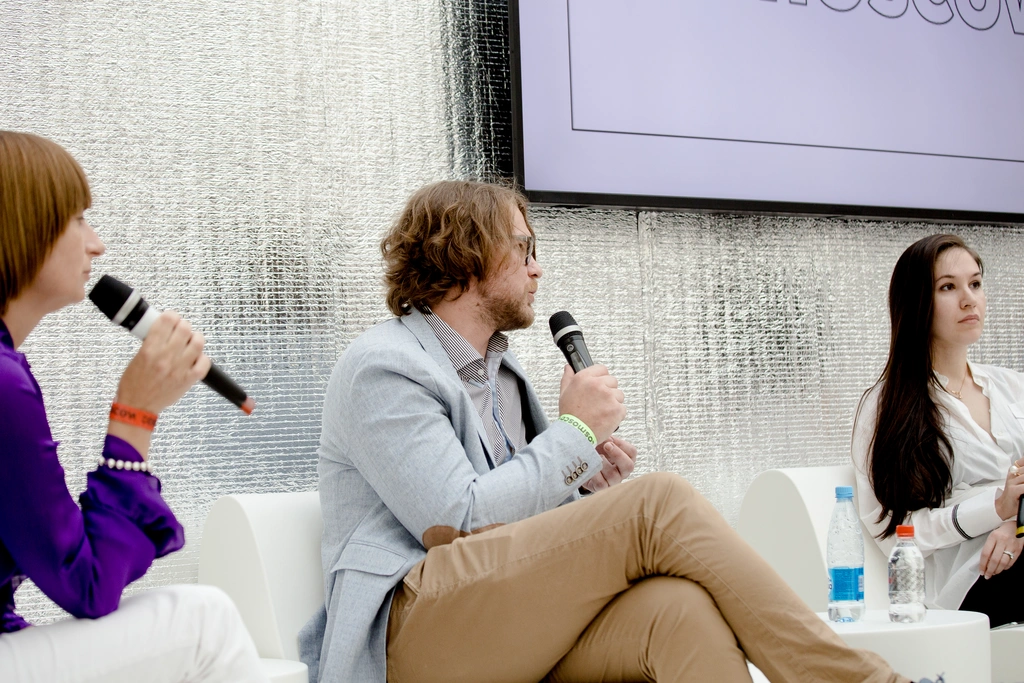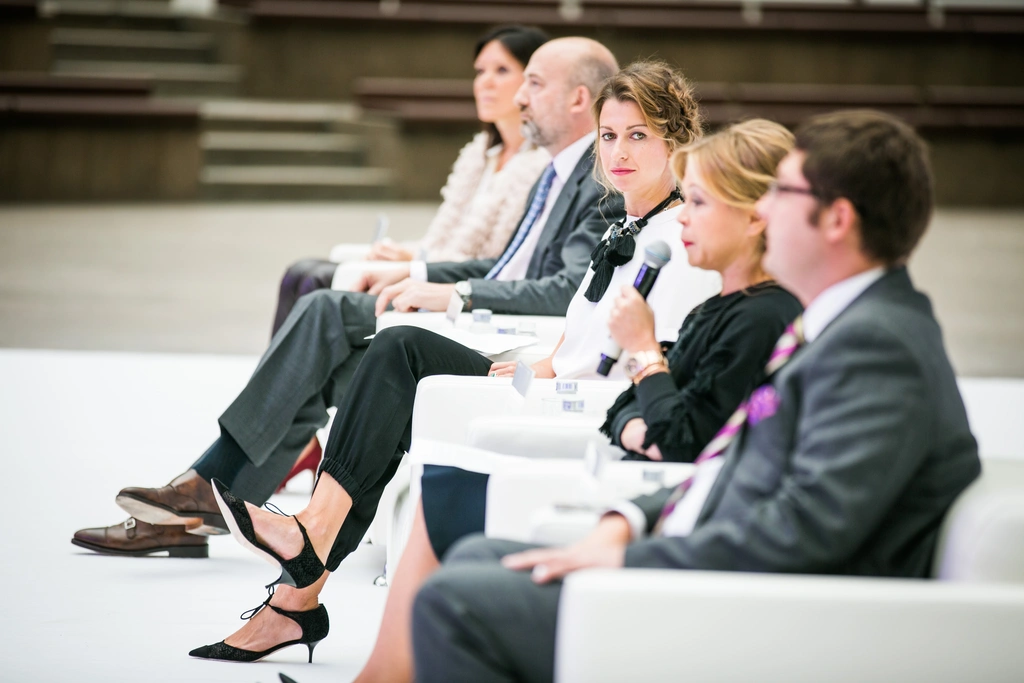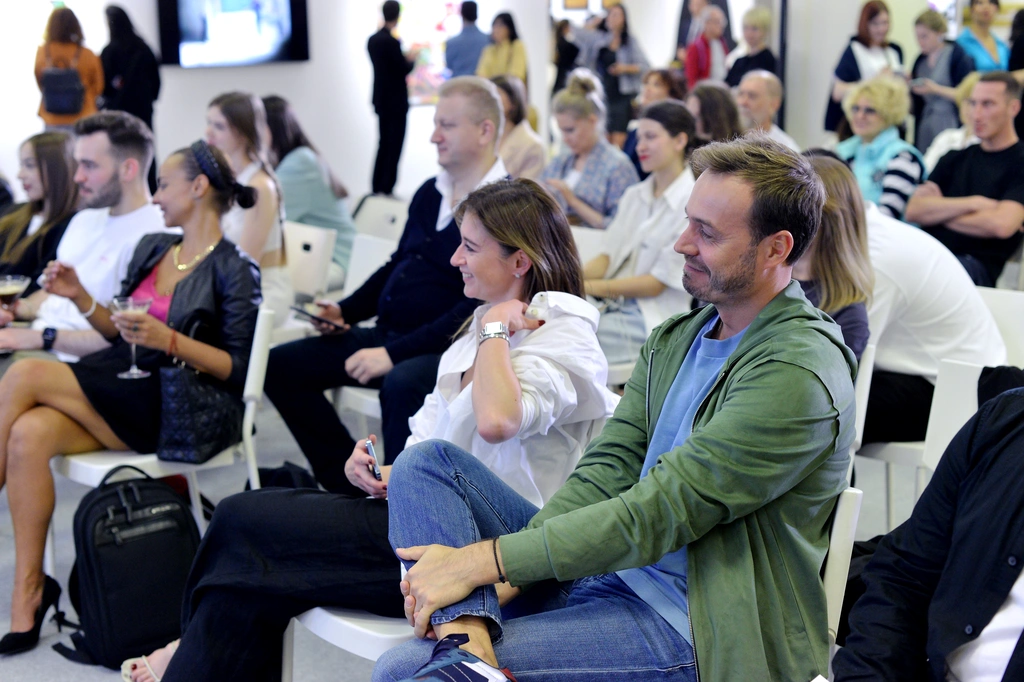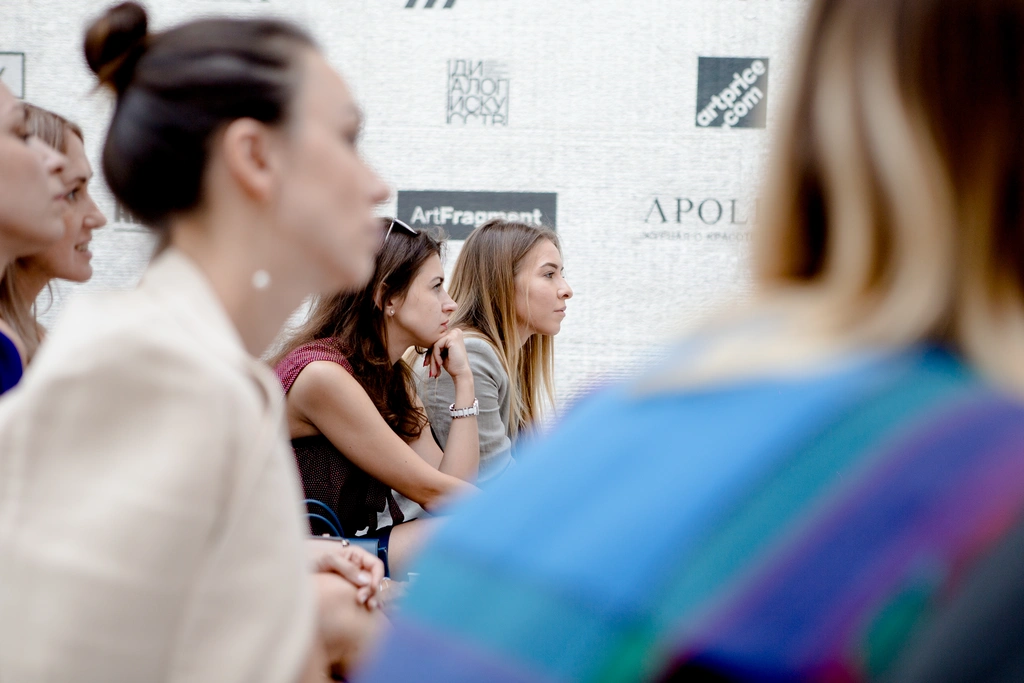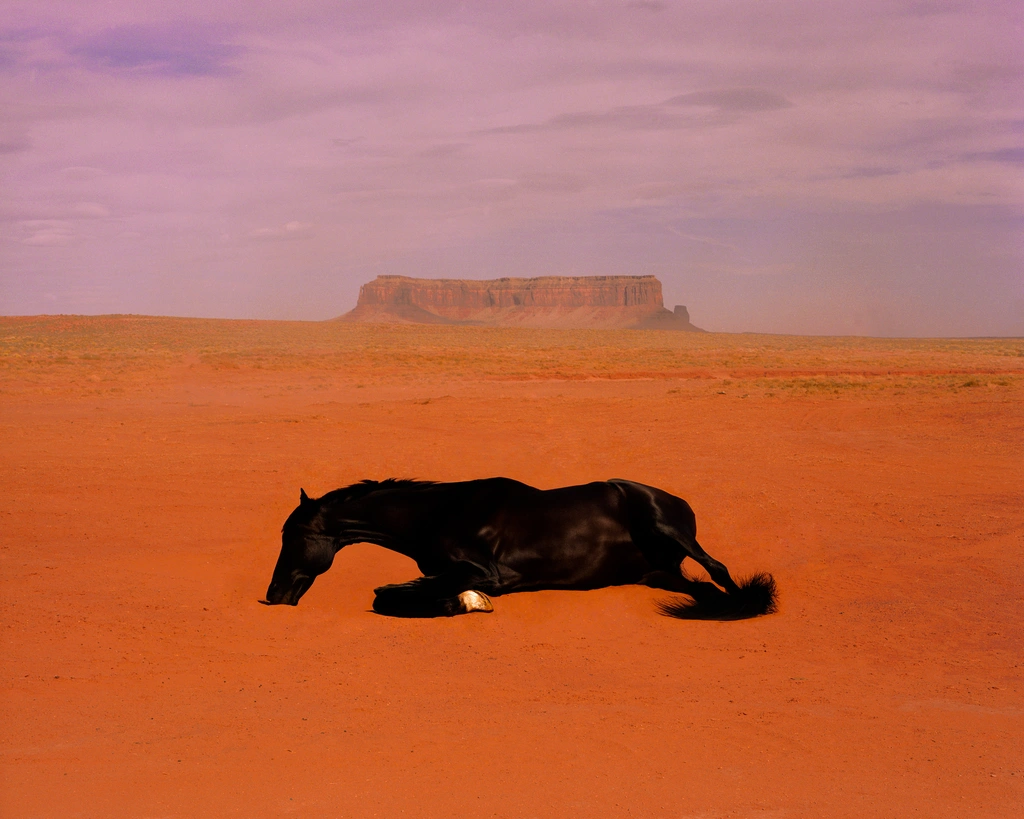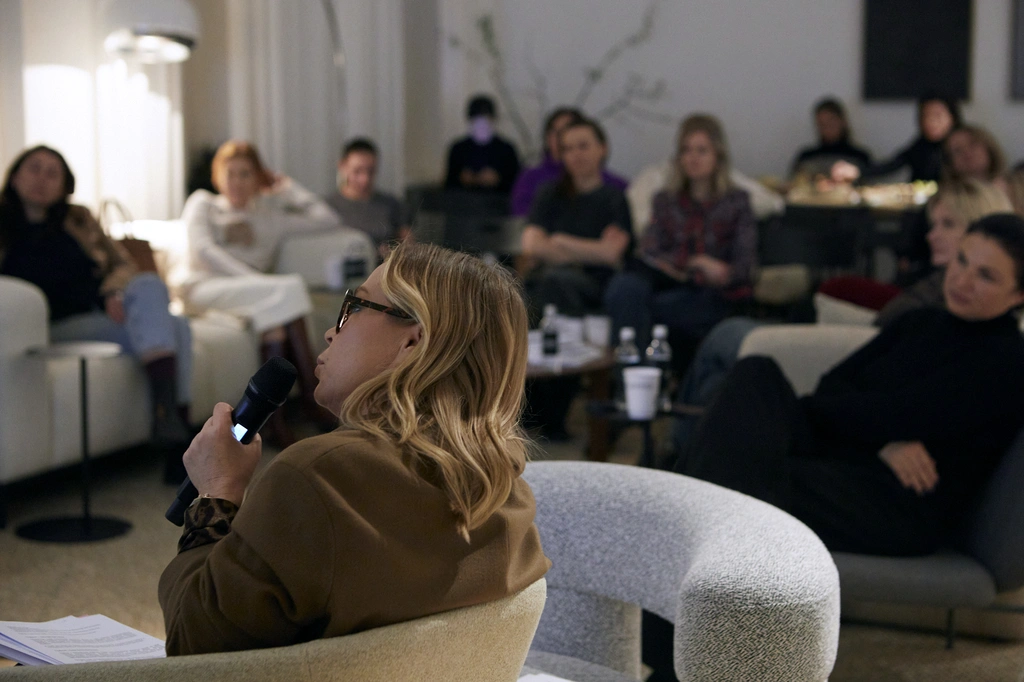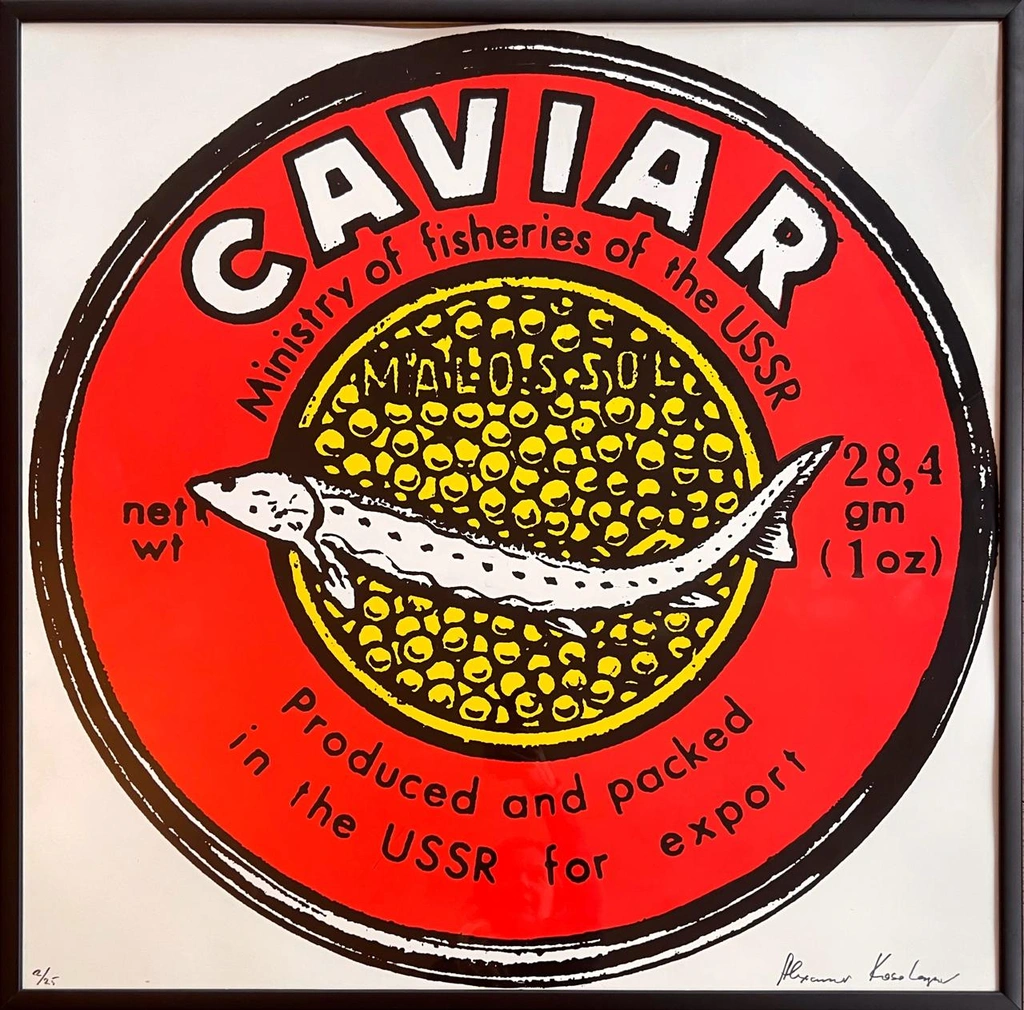Program
Artist of the year
PROVMYZA art group. The “Seeds”The Artist of the Year program is one of the Cosmoscow Foundation's most important non-commercial initiatives. It is also part of the Foundation's work aimed at the implementation of artistic projects. Its main goal is to support free artistic creativity. The choosing procedure is as follows. The special council of invited experts proposes the names of the candidacies, and then the Foundation's Supervisory Board selects the winner. The winner gets the opportunity to implement a new project and present it at the fair.
Read more Museum of the Year
Ploschad Mira Museum Center. “Both Aleph and Omega”The Ploschad Mira Museum Center (Krasnoyarsk) is the largest exhibition and presentation venue for contemporary art in Siberia. The museum was created in 1987 as the 13th branch of the Central Lenin Museum, but in the early 1990s it refocused on contemporary art practices: during this time, it managed to gather an impressive collection. It was the first in Russia to launch such formats as the Biennale (1995) and Museum Night (2002). The museum building is a monument to Soviet modernism with many halls and levels, built on the banks of the Yenisei River. The exhibition space is almost 5,000 square meters.
Read more Collector's eye project
Collector’s Eye project: BORK x CosmoscowThe stand will showcase the art collection of the winner of the Collector of the Year award, established by BORK and the Cosmoscow Foundation in 2025. The initiative aims to popularize collecting in order to develop the Russian contemporary art industry, as well as to create opportunities and favorable conditions for recognizing personal contributions to the formation of the art market. The award ceremony will be held on September 11 as part of the 13th Cosmoscow edition at the Timiryazev Centre.
Read more Limonov Art Foundation
Limonov Art FoundationLAF will present Alexander Gronsky’s project “It Seems You’ve Seen this Before” (2008–2025). As part of the project, the photographs and videos created over the last twenty years are assembled like a rebus. All its elements (figures in the landscape, houses, words, and letters) swirl around an elusive solution. When it seems to appear, it vanishes again, leaving only the tension of the search. In this space, circular wandering, be it the figure of a skier moving along a tiny patch of snow or a person walking along the perimeter of a garbage mountain, ceases to be a sign of confusion or loss of purpose. Repetition here becomes a gesture that stitches the space, connecting its torn fragments through a mechanical, almost ritual return to the same trajectory. Gradually, a special topology is built, where the difference between “here” and “there”, “now” and “then” ceases to exist. All that remains is the experience of being in this closed movement, where each encounter with the “same” is new, and each step is an aspiration towards an absent center.
Read more New Collectors Fondation
New Collectors FoundationFor the second year in a row, as part of the Cosmoscow non-profit program, the New Collectors Foundation for the Support and Development of Contemporary Collecting is showing private collections of contemporary art in order to highlight the role of a collector in the system of cultural processes.
Read more Solodovnya Center
Solodovnya CenterSolodovnya is a new space for contemporary culture in the Khamovniki district. Its building (one of the few surviving structures of the former Experimental Beverage Plant in Khamovniki) was carefully restored while preserving its historical appearance and striking architectural dominants, including the oven’s ventilating pipe. Today, the center provides an opportunity for a lively dialogue between the classics and the modern without borders and museum showcases.
Read more Nizhny Novgorov Region Art Residency Program
Nizhny Novgorod Region Art Residency ProgramThis year, Cosmoscow International Contemporary Art Fair features the Nizhny Novgorod Region Art Residency Program. It brings together artists who participated in the residencies over the three years of the program, and presents their creative view of Nizhny Novgorod and the region, formed in the process of research and artistic experiments. The project brings together about 30 artists from different cities of Russia, including Moscow, Yekaterinburg, St. Petersburg, Volgograd, and Nizhny Novgorod, as well as from Senegal. The participants’ works reflect individual routes of exploration of the territory: from observation of the urban environment to rethinking cultural codes and landscapes. The concept of the exhibition is inspired by the unique image of Nizhny Novgorod as the “capital of sunsets” and the symbolic role of the horizon line in the perception of space, where history, architecture and natural poetry meet.
Read more KIT 4 KID
KIT 4 KIDThe “Digital Greenhouse” installation is a unique artistic statement created by Italian digital artists Matteo Mandelli and Luca Baldocchi in collaboration with KIT 4 KID, an application for children with autism spectrum disorder (ASD). In the greenhouse, digital flowers “grow” in pots with real soil as the result of the artists’ processing of real drawings by people with ASD (students of the Anton Is Right Here charity foundation). The concept of the installation is similar to how people with ASD see and feel the world: they focus their attention inward and not outward to society (‘autism’ from the Greek auto or ‘self’). Part of the proceeds from the sale of each art object of the installation will be donated to Anton Is Right Here to create the first Resource Center for Autism in St. Petersburg, which will be able to provide assistance to 10,000 families annually.
Read more Anna Akhmatova Museum x LUDA Gallery
Anna Akhmatova Museum x LUDA Gallery“WAS, WAS NOT” is an exhibition project at the Anna Akhmatova Museum and LUDA Gallery dedicated to the Russian avant-garde. Here, the past meets the present: contemporary artists engage in a creative dialogue with the legacy of Malevich, Tatlin, Matyushin, and their contemporaries, finding in their search a response for the art of the 21st century. The key figure of the project is Nikolai Punin (1888–1953), an outstanding art critic and theorist, who was the head of the State Russian Museum’s new trends department in 1926. He was the first to introduce the public to the achievements of the Russian avant-garde, distinguished by the absence of dogmatism and prejudice, seeing open horizons in art. His legacy became open to the general public only in the post-Soviet era, thanks to the research and publications of his descendants. The “WAS, WAS NOT” project was initiated by the Fountain House in 2023. It unites the eras of the Silver Age, avant-garde and modern times. During the first year, 15 exhibitions were held, revealing the continuity and energy of the Russian avant-garde tradition. According to curator Petr Bely, he works with marginal artists, and for them avant-garde is a radical and living source of inspiration.
Read more Vitaly Pushnitsky's ''Okham's Razor'' book. Denis Khimilyayne's Book Program.
Vitaly Pushnitsky’s “Ockham’s Razor” book. Denis Khimilyayne’s Book ProgramCosmoscow will host the presentation of Vitaly Pushnitsky’s book, created at the intersection of the livre d’artiste and autofiction genres, is the pilot project of Denis Khimilyayne’s Book Program. It features about 200 images from the “Ockham’s Razor” graphic series, a long-term visual study and recording of harmonic states. Each work, a dissected postcard, is given a plastic context: a photograph and a text reflecting on the philosophy of memory, the concept of quality in art and the phenomenon of time. In addition to Pushnitsky’s essay on his methodology for studying composition, the book contains articles by three major Russian art historians: Sergey Popov, Irina Terentyeva and Gleb Ershov. The result is a kind of educational workshop, a philosophical treatise, and a public talk.
Read more Livre d’artiste club
Livre d’artiste clubThe Moscow Livre d’artiste Club presents five editions created in the livre d’artiste format as part of the Club’s publishing program. The Club’s venue is the exhibition space in the main office of the LANIT Group of Companies. It is equipped with unique equipment and is designed to display livre d’artiste editions of outstanding artists of the 20th century from the collection of the holding’s founder, Georgy Gens. LANIT employees lovingly call this place “our Museum”.
Read more Persian section
Persian Section. “Man. Civilization. Universe”. Joint curatorial project of ARTSUN Gallery and ARTHALL International (Russia / Iran)The “Man. Civilization. Universe” project presents a wide selection of works by key Iranian artists of the 20th–21st centuries who shaped the visual thinking of their time and influenced the international art scene. This is a rare opportunity not only to see but also to purchase works that are usually kept in museums or private collections or exhibited exclusively at international auctions.
Read more COSMOSCOW TALKS
Cosmoscow Talks 2025. Golden Collection. Collectors: Stories of Giddy SuccessOne of the noticeable trends in Russian contemporary art is the growing interest in private collectors, due to the unconditional influence that these passionate people have on the art system. Marking the emerging trend, the Cosmoscow Foundation has initiated and continues to support and implement a variety of initiatives related to private collecting: from the Collector’s Eye project and individual stands at the fair to the Collector of the Year Award established together with BORK.
Read more COSMOSCOW TALKS
Supporting art residencies as a contribution to the stability of the contemporary art market12 September 2025 15:00 - 16:00
Art residencies are a relevant way to support professional creators in the field of art culture. Consistent support of artists and the creative process allows for the formation of a stable environment, which contributes to the fact that the connections between the creation, exhibition, sale, and preservation of works are closer, and the patterns in pricing are more visible. Direct conversation between those who stand at the cradle of new art (art residencies) and those who ensure its movement towards a better future (private collectors) is the key to productive compaction of the artistic environment, increasing the level of infrastructure connectivity and economic feasibility.
Read more COSMOSCOW TALKS
The importance of an archive today: from institution to collector12 September 2025 16:30 - 17:30
Today, an archive is not only a means of storing, researching and transmitting memory, but also an important tool in the work of institutions, foundations, museums, and private collectors.
In a discussion with experts, we will talk about what types of archives are most in demand today, what functions and structures they have, and how they are becoming a new exhibition medium.
Read more COSMOSCOW TALKS
Дискуссия «Экспертиза современного искусства: актуальность и формы реализации»12 September 2025 18:00 - 19:00
The discussion will be the first in a series of discussions on the problems of attribution of contemporary art, established by the Institute of Contemporary Art Expertise. The participants of the discussion will try to answer the following questions. How and by whom should authenticity be determined in contemporary art? Why is an examination necessary for works created in the last 60 years? What catalogues-raisonnés does the market need? Speakers will also discuss possible strategies for the development of the institute, outlining promising directions.
Read more COSMOSCOW TALKS
Speaking fashion: how contemporary art interacts with fashion13 September 2025 13:00 - 14:00
What happens when modern art and fashion begin to exchange ideas, mediums, and even physicality? We propose to talk about the moment of transition, where one ends and the other begins, and why this boundary is becoming especially shaky today. The discussion focuses on issues of hybridity and interpenetration. How does the podium turn into a performance, and the exhibition into a collection show? Why can a dress be perceived as a sculpture and a painting as a garment? And what does this say about our time, where identity, body, and visual culture are becoming a field of constant experimentation?
Read more COSMOSCOW TALKS
The imaginary worshipped one: the image of the ideal patron for a museum and other institutions13 September 2025 14:30 - 15:30
Who would today’s museums and cultural institutions like to see as their patron? A generous investor, ready to invest without conditions? An enlightened visionary, shaping the cultural agenda? Or, on the contrary, a sensitive patron, allowing professionals to act independently?
Read more COSMOSCOW TALKS
The aesthetics of meaning: how technology helps us talk about the complicated14 September 2025 13:00 - 14:00
How does technological art shape our perception of reality and empathy? What brings the scientific and artistic worlds closer together? How do digital and immersive art help the viewer comprehend complex topics? The participants of the discussion will talk about this and much more using examples from their own practice.
Read more COSMOSCOW TALKS
Artist as a collector14 September 2025 14:30 - 15:30
When an artist becomes a collector, his role in the art world takes on new dimensions. Collecting for artists is not only a way to preserve the works of others, but also a way to better understand the creative process, to study its contexts and elements that can inspire new discoveries. How do artists perceive collecting, and what motivates them when choosing objects for their collections? How do their personal collections become an extension of their artistic practice and a reflection of their unique philosophy and vision of the world?
Read more COSMOSCOW TALKS
From local to global: the dynamics of collecting African contemporary art14 September 2025 16:00 - 17:00
Over the past few decades, the global art landscape has undergone significant changes, moving beyond a traditionally Eurocentric axis to embrace more polyphonic narratives. Artists, curators, and institutions across Africa have not only become more visible but are increasingly redefining the terms of global contemporary practice.
Read more COSMOSCOW TALKS
Russian collectors of contemporary art in the international context14 September 2025 17:30 - 18:30
What distinguishes Russian contemporary art collectors from their foreign colleagues? Do they build their identity through synchronization with global processes and trends in the art world or through opposition to them? The speakers will discuss the importance of private collecting practices for the formation of the cultural landscape and their influence on the development of the contemporary art scene both in Russia and abroad. They will share their collecting strategies and thoughts on the current geopolitical and economic conditions. Are these conditions a challenge, new opportunities, or an insurmountable obstacle to the development of the domestic art scene?
Read more COSMOSCOW TALKS
Relevance of the book: livre d’artiste, artist’s book, exhibition catalogue13 September 2025 16:00 - 18:00
India: How the Spirit Becomes Matter
India: How the Spirit Becomes MatterEspecially for Cosmoscow, collectors of Indian art Ekaterina and Andrey Terebenin present their selection of works by contemporary Indian artists and designers from three leading Indian galleries as a special COLLECTORS project.
Read more “Unusual Object” exhibition
“Unusual Object” exhibitionThe Cosmoscow Foundation approached collectors from among the nominees for the BORK Collector of the Year award to propose one work that, from their point of view, represents the most unconventional form of art in their collections.
Read more Cosmoscow Дети x Chupa Chups
Cosmoscow Kids x Chupa ChupsThis year, the Cosmoscow Kids program is turning into a real Planet of Fun prepared by Chupa Chups, a universe where art becomes a game, and a game becomes art. Here, every child will be able to feel the taste of creativity and reveal their potential through joy and experimentation.
Read more Cosmoscow Дети x Chupa Chups
Cosmoscow Дети x Chupa Chups. 12 сентябряCosmoscow Kids x Chupa Chups activities on Friday, September 12.
Read more Cosmoscow Дети x Chupa Chups
Дети x Chupa Chups. 13 сентябряCosmoscow Kids x Chupa Chups on Saturday, September 13
Read more Cosmoscow Дети x Chupa Chups
Cosmoscow Дети x Chupa Chups. 14 сентябряCosmoscow Kids x Chupa Chups on Sunday, September 14.
Read more Медиафорум Сosmoscow
Cosmoscow 2025 Media ForumFrom September 12 to 14, Cosmoscow will host a series of discussions with media personalities and representatives of iconic publications for whom contemporary art is an important component of success.
Venue: Timiryazev Centre, 2nd floor, Media Forum Hall.
Read more Медиафорум Сosmoscow
Green Agenda: Creativity as a Tool for a Sustainable Future12 September 2025 12:00 - 13:00
Art, as a powerful tool of communication and inspiration, plays an important role in understanding environmental challenges and shaping public consciousness. During the discussion, we will learn how artists and media projects reflect environmental issues through visual and media forms — from climate change and loss of biodiversity to environmental pollution. We will discuss how art helps draw attention to important issues, and how media forms can become catalysts for the formation of environmental awareness in society.
Read more Медиафорум Сosmoscow
Art and Closeness: Where is the Line?12 September 2025 14:00 - 15:00
In recent years, we have seen a real surge of interest in contemporary art. Exhibitions are no longer the prerogative of the capital and megacities: biennials, art shows, and festivals are emerging in cozy regional spaces. Artists are becoming more and more recognizable, in demand, and their works are finding more and more viewers and buyers.
Read more Медиафорум Сosmoscow
Statement in the Digital Environment12 September 2025 16:00 - 17:00
We will discuss how today’s media and digital technologies transform artistic discourse, expanding opportunities for communication and criticism. We will talk about how the perception of art is changing in the era of the Internet, social networks and virtual reality: new platforms, new audiences, new forms of expression.
Read more Медиафорум Сosmoscow
Collectible Design: Art and Function in One Object12 September 2025 18:00 - 19:00
We will consider the role of collectible design as a unique synthesis of practical function and artistic expression. We will discuss how designers and artists create objects that not only serve a functional purpose, but also become valuable art objects that evoke an emotional response and shape cultural contexts.
Read more Медиафорум Сosmoscow
How Art Criticism Shapes and Reflects Art Today13 September 2025 11:00 - 12:00
In today’s world, the role of art criticism and journalism is undergoing fundamental changes. New media, platforms and genres are creating unique ways of interpreting and discussing art, influencing the cultural agenda and the viewer’s perception.
Read more Медиафорум Сosmoscow
Business and Art: Why Brands Need Art Collaborations and How They Help Interact with Users13 September 2025 16:00 - 17:00
In the era of visual culture and emotional marketing, collaboration between business and art is becoming a sustainable trend and an effective way to attract new users and increase loyalty of current ones. How to make a successful art collaboration that helps solve business problems and build an emotional connection with clients.
Read more Медиафорум Сosmoscow
Real Estate as Art13 September 2025 18:00 - 19:00
Contemporary artists are actively moving beyond galleries and exhibition spaces, integrating their projects into the urban environment through collaboration with developers, architects and designers. These partnerships allow for the creation of unique formats and projects, transforming urban space into a living art object and a platform for cultural experiments.
Read more Медиафорум Сosmoscow
I Feel That Way: How Artists and Art Workers Foresee Trends14 September 2025 12:00 - 13:00
The Russian art market today is still in the formation stage, which requires artists and cultural figures to have a keen sense of time and the ability to foresee future current trends. But what plays a key role in this process? Intuition based on inner feeling and experience, creativity or systematic analysis, research and a deep understanding of the context?
Read more Медиафорум Сosmoscow
The Art of Life Today14 September 2025 16:00 - 17:00
Art of Life is the name of a regular column in U Magazine. And this is exactly what today’s Russian society is diligently mastering today. How to live in a world where events happen every year that are ready to turn all the usual coordinate systems upside down, and when super-news only keeps a person’s attention for 15-20 minutes? How to adapt to the absolute multitasking and omnichannel mode? How to resist burnout and not lose the meaning of life? And finally, the main thing: why is it art that is becoming a new point of support and a source of inspiration for one's own development in these times. We discuss the topic with representatives of the creative community.
Read more PERFORMA kinetic drama “Horse hour”
PERFORMA kinetic drama “Horse hour”On September 14 (at 7 p.m. and 9 p.m.) the new PERFORMA festival of performing arts will present a special event as part of the Cosmoscow International Contemporary Art Fair. The Horse Hour kinetic drama performance is a collaboration with the Context. Diana Vishneva festival and multimedia artists Panterra. It is a plastic exploration of human interaction with new forms of mind.
Read more Cosmoscow Art Collectors Club
Cosmoscow Art Collectors ClubThe Cosmoscow Art Collectors Club is an exclusive club for those willing to immerse themselves in the contemporary art scene.
Read more TEO by Cosmoscow
TEO by CosmoscowThe TEO by Cosmoscow online platform and the Swiss watch manufacturer Raymond Weil, together with Designic design studio, present the Curator’s Office project. This is not just a workspace but a kind of backstage, where the curator acts as a director, while the exhibition turns into a stage with all the leading roles given to art. The selection of works implies that each piece would interact with another, forming new connections and stories. These connections are polysemantic and open to interpretation: the viewer becomes an active participant in the process and can try on the role of a curator, putting together their own narrative from the proposed elements. Their visual experience, personal associations, and emotional reactions form the context and expand the field of meanings.
Read more 